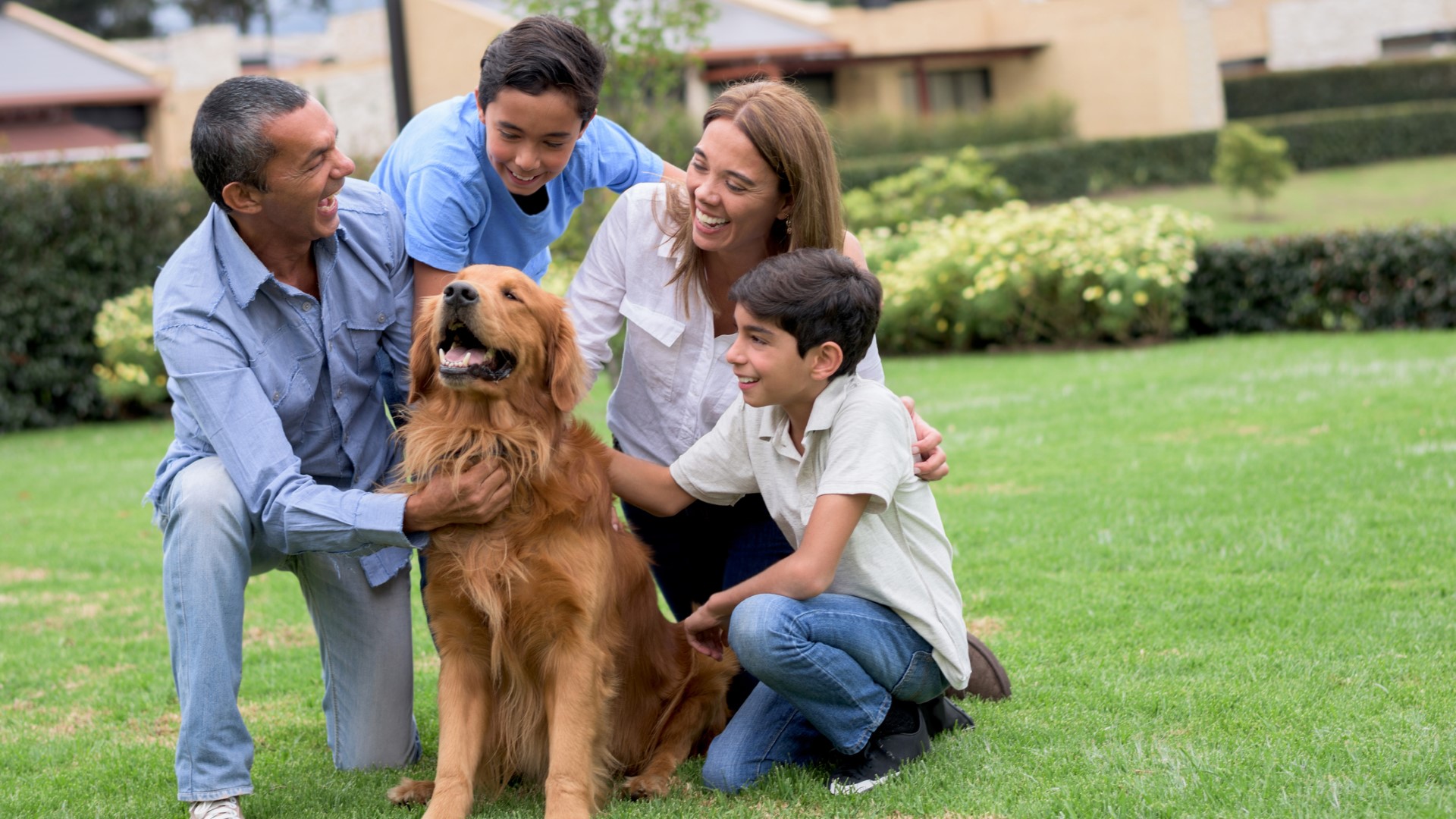
Preparing to welcome a large-breed dog into your home? Big pups can be a blast to live with as long as you're adequately prepared and know what to expect from your new canine pal. If you're looking for things to know about caring for a large-breed dog, you've come to the right place. We've got you covered.
Read on to learn about how to help your large doggo be a well-adjusted, happy, and healthy pup by using positive reinforcement, stocking up on the best dog treats, preparing your space for a big pup, and more!
From tips and tricks for polite greetings to advice on how to socialize your large-breed puppy, we've got all the info you need to live your best life with your new canine BFF.
32 tips for taking care of a large-breed dog
1. Research
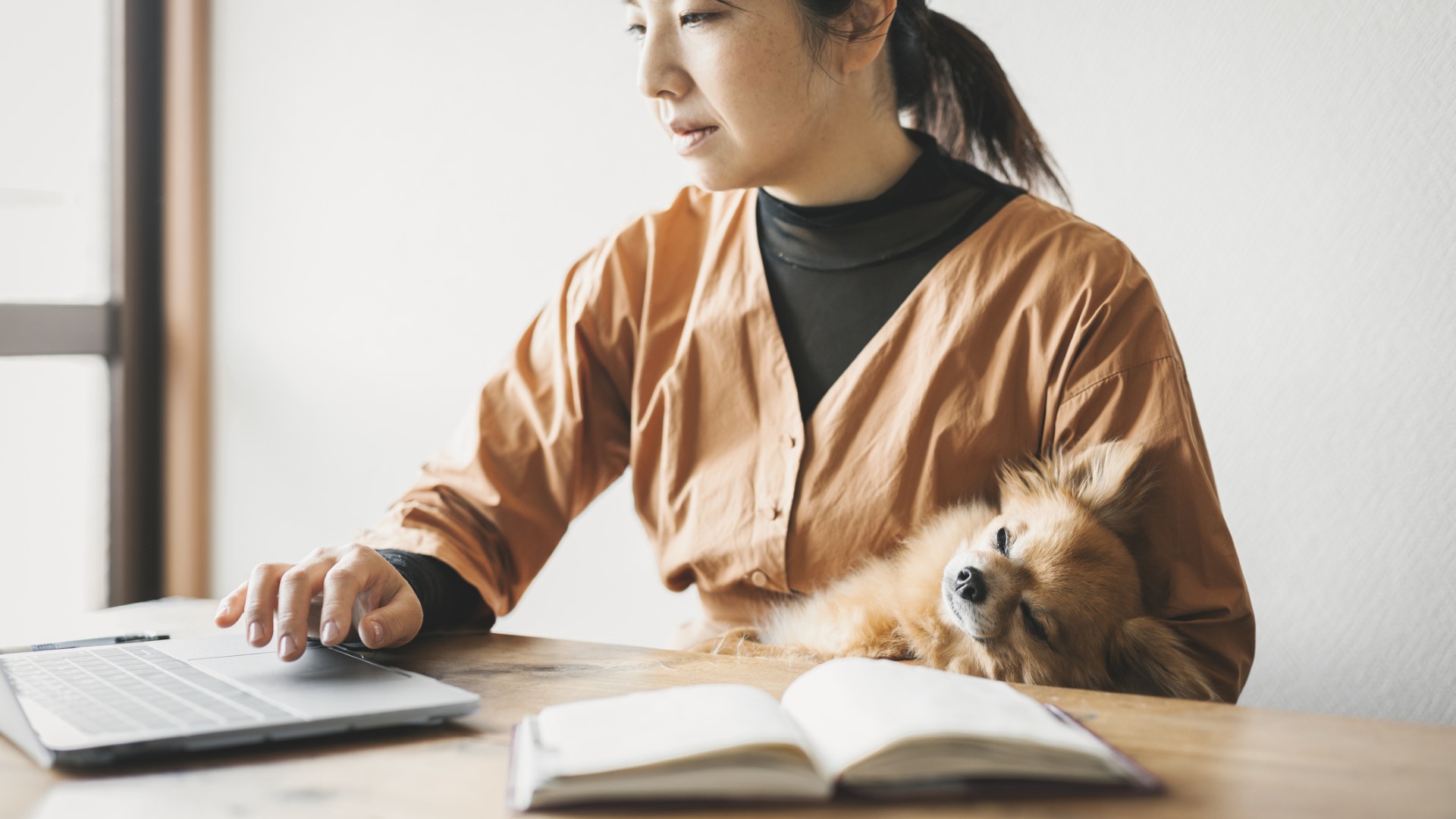
Before you adopt a large-breed dog, it’s important to be adequately prepared. If you’re hoping to adopt a specific breed or breed mix, spend some time researching breed guides. Ideally, look for guides written or reviewed by veterinarians, behaviorists, or accredited positive reinforcement trainers who can provide accurate information centered on animal welfare and ethical training standards.
Breed genetics are a contributing part of what can help shape the personality and characteristics of an individual dog along with a host of environmental and social factors. Through your research, you may find that the physical, mental, and social enrichment needs of a specific large dog breed fit best with your family.
2. Make sure you have the space
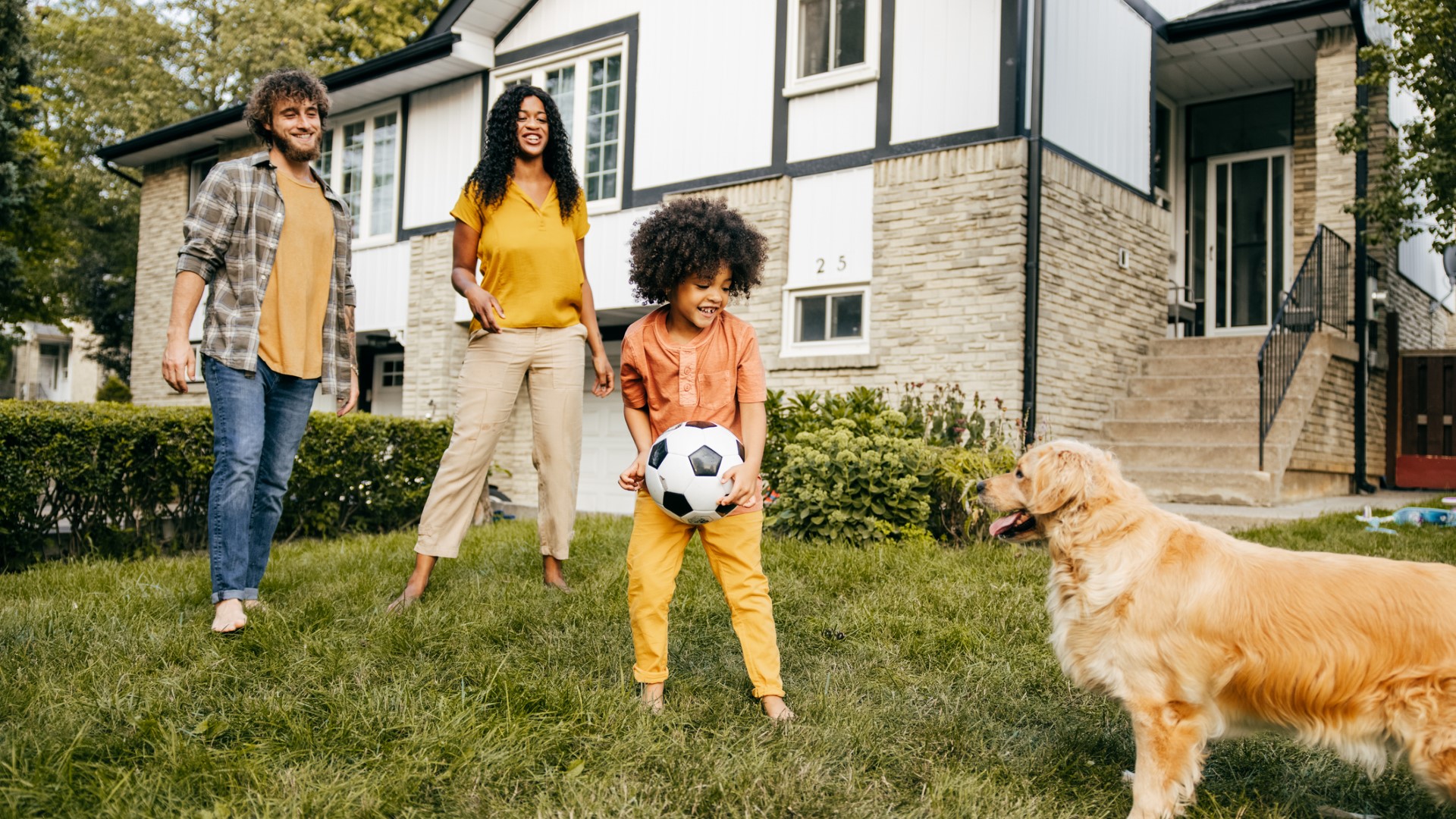
This might go without saying, but before adopting a large-breed dog, make sure you have the space to ensure a healthy and happy pup. Adequate space and freedom of movement are especially important considerations when adopting a dog whose healthy adult weight may push 70 to 100 pounds. For example, if you plan on taking your large doggo along on outings and adventures, make sure to consider if they will fit comfortably in your vehicle.
3. Introduce mat work
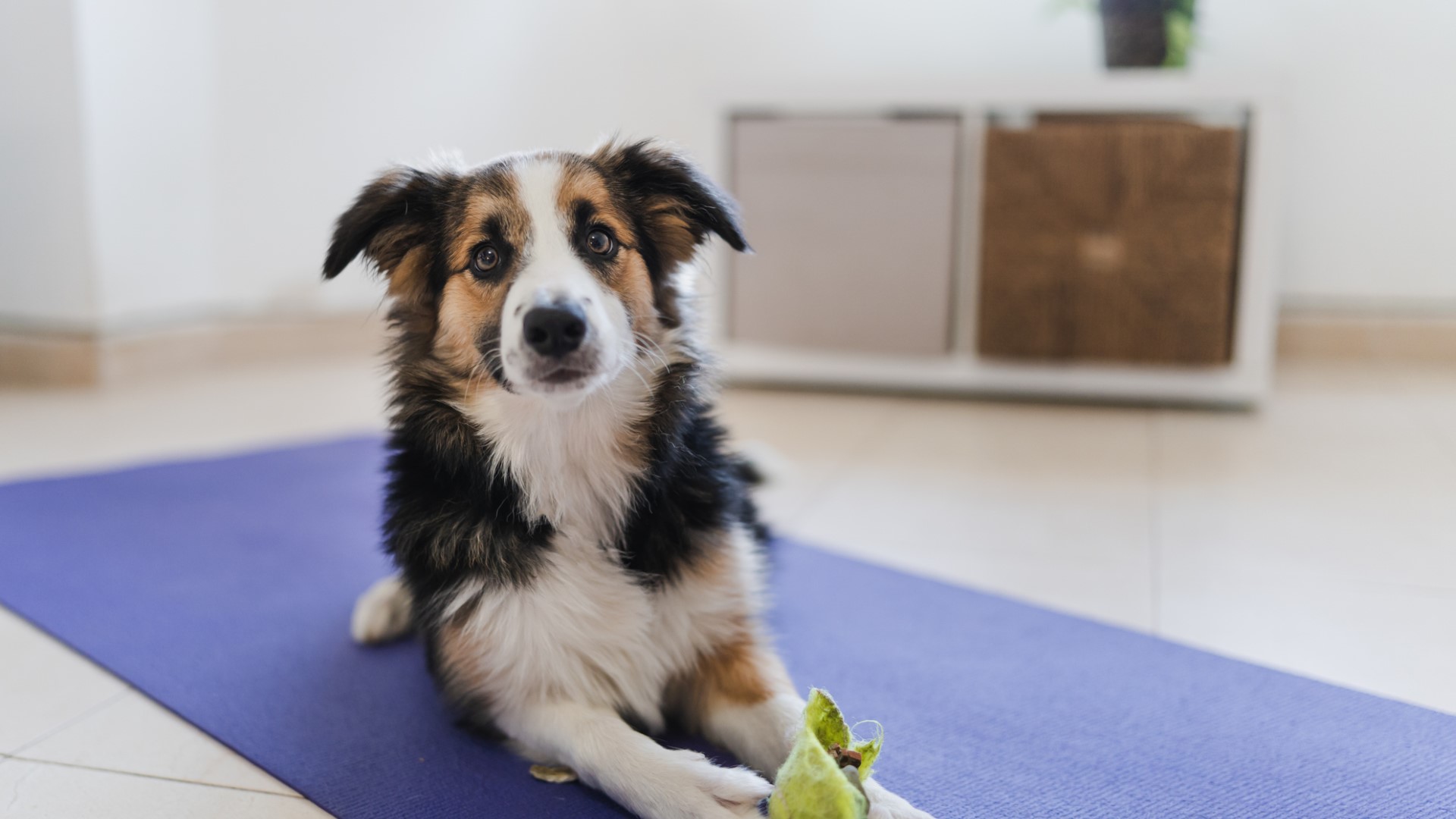
Teaching your large dog to comfortably relax on a mat is an awesome tool to help keep your big pup out of trouble. You can use this skill to teach your pup to lie on the mat for a range of scenarios such as when company arrives, when you're at a dog-friendly cafe, or when you're at home eating dinner and would like some peace and quiet. To teach this, you'll want to associate the mat with good experiences. You can bring out a special toy or treat-filled kong for them to have when they go to their mat.
4. Be aware of spay/neuter recommendations for specific large breeds
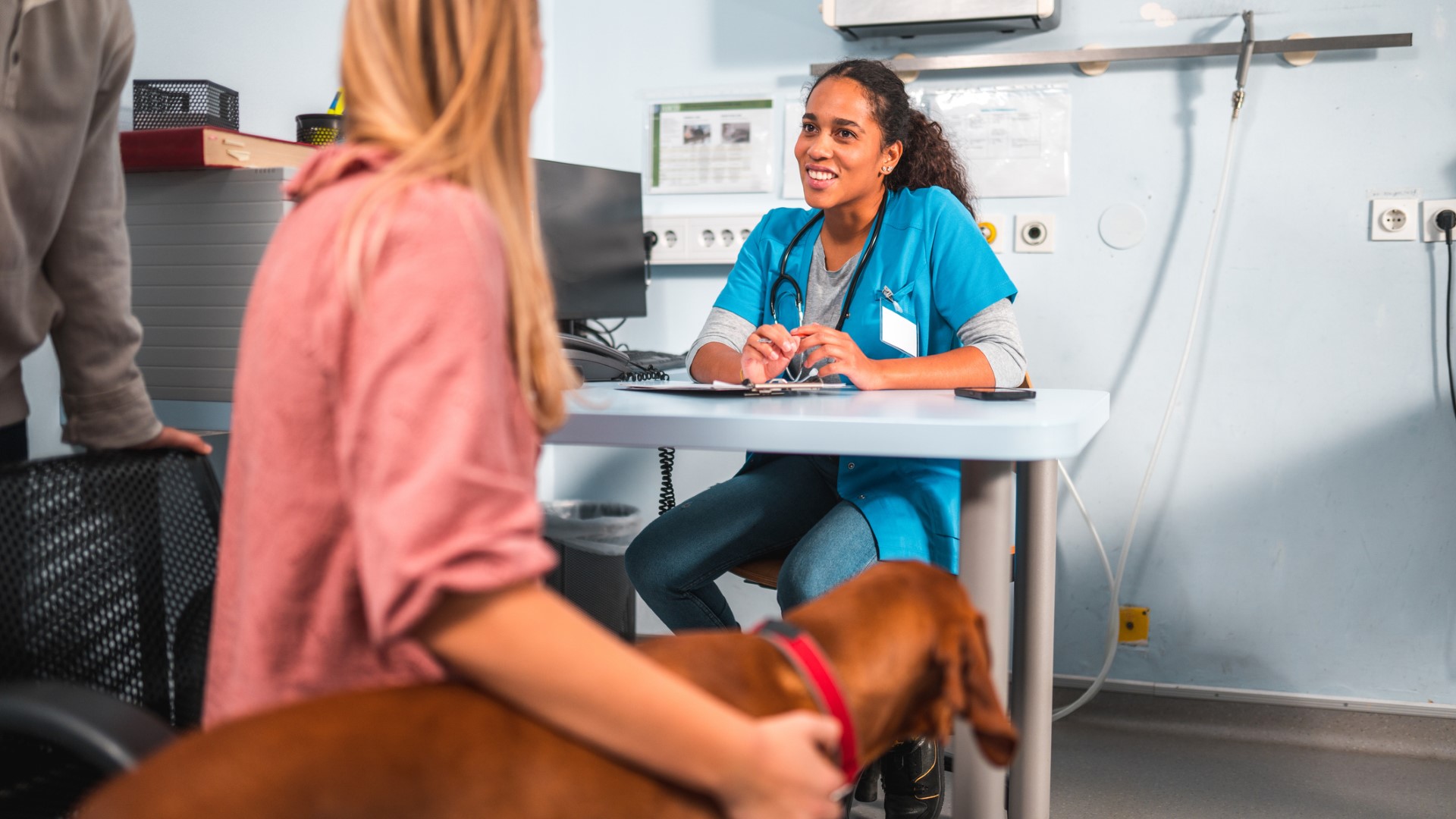
According to a large study of 35 dog breeds by the University of California, Davis, several large dog breeds may benefit from waiting at least one year before spaying or neutering. This is due to a reported increased risk of developing a range of health conditions with early sterilization. For example, the study found that male and female Labrador retrievers, golden retrievers, and German shepherds experienced a 2-4 times incidence increase in one or more joint disorders when spaying or neutering under one year of age.
If you plan on spaying or neutering your large-breed dog, we recommend consulting with a vet versed in the latest research on the optimal time to perform the surgery for your pup.
5. Get appropriately sized toys
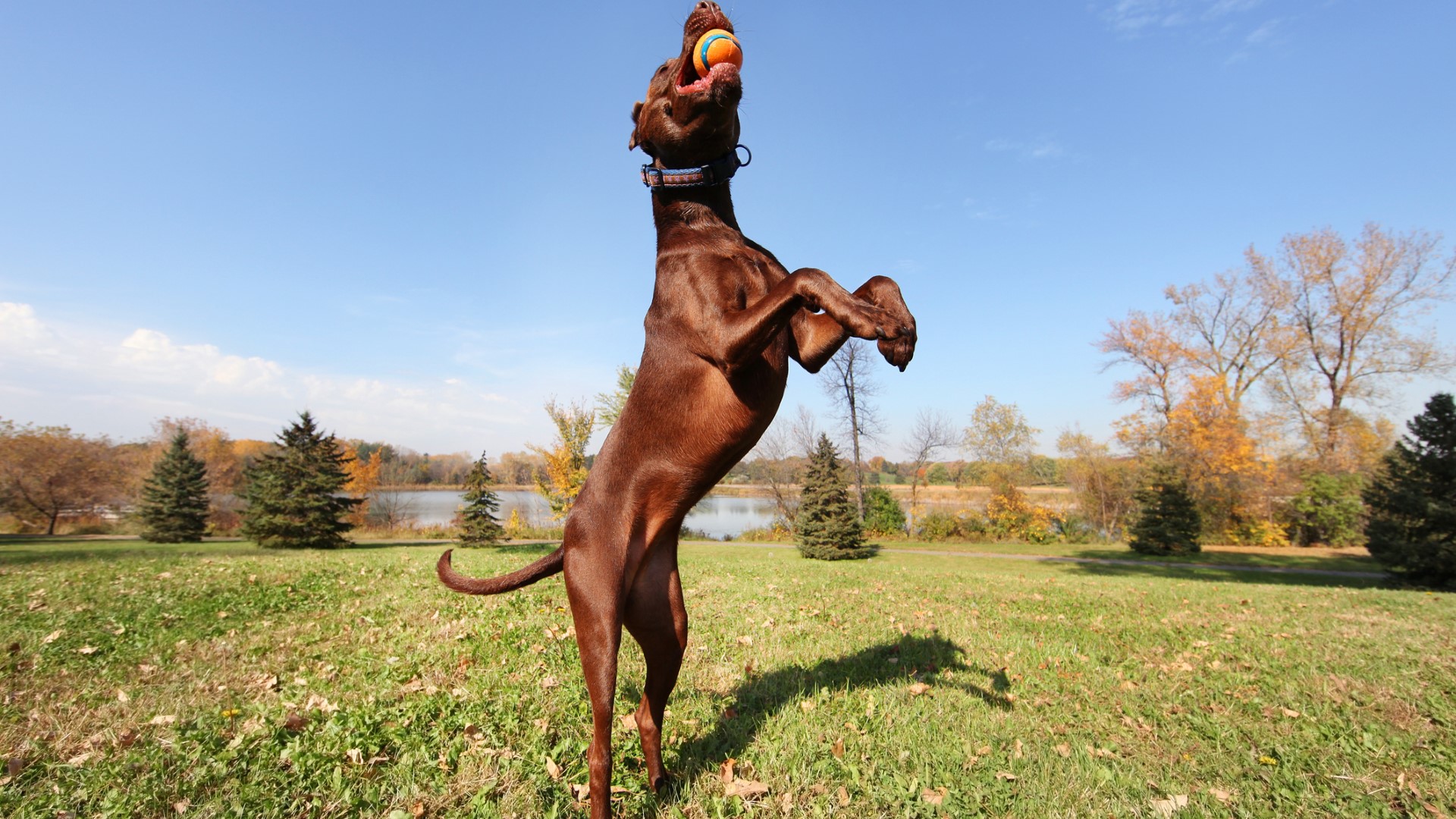
Large dogs can be tough on toys. They can also accidentally swallow toys made for small breeds. To keep your gentle giant safe, it’s important to select from some of the best dog toys that are appropriately sized for large breeds. Kongs, balls, chew toys, rings, etc. should all be large enough that they aren't easily swallowed.
Getting large enough toys also makes playtime more fun for you and your pup! You can more easily play a game of tug-of-war and catch when the toys are suitable for your pup's large maw.
6. Find a large breed to match your household’s energy
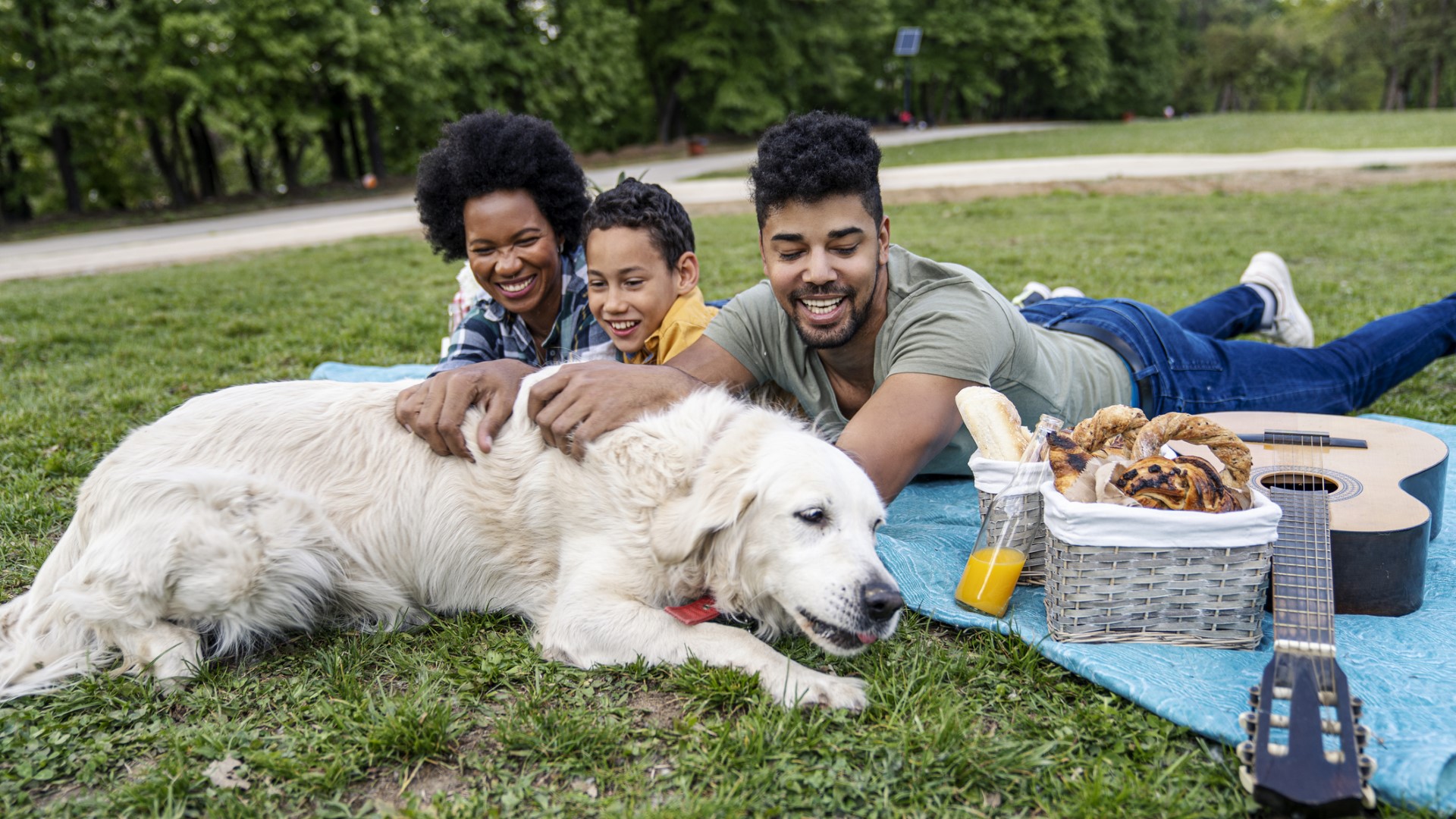
Not all large-breed dogs have the same energy levels. Large working breeds, like German shepherds, tend to thrive in a higher-energy home where they have plenty of active enrichment time. If you're looking for a lower-key big pup, you may want to look towards non-working breeds. Of course, you'll ultimately want to pick your pup based on their individual personality and activity levels.
If you're adopting from a rescue or shelter, make sure to let staff know what type of energy level you're looking for so they can help recommend specific adoptable pups.
7. Stock up on large-breed-appropriate food
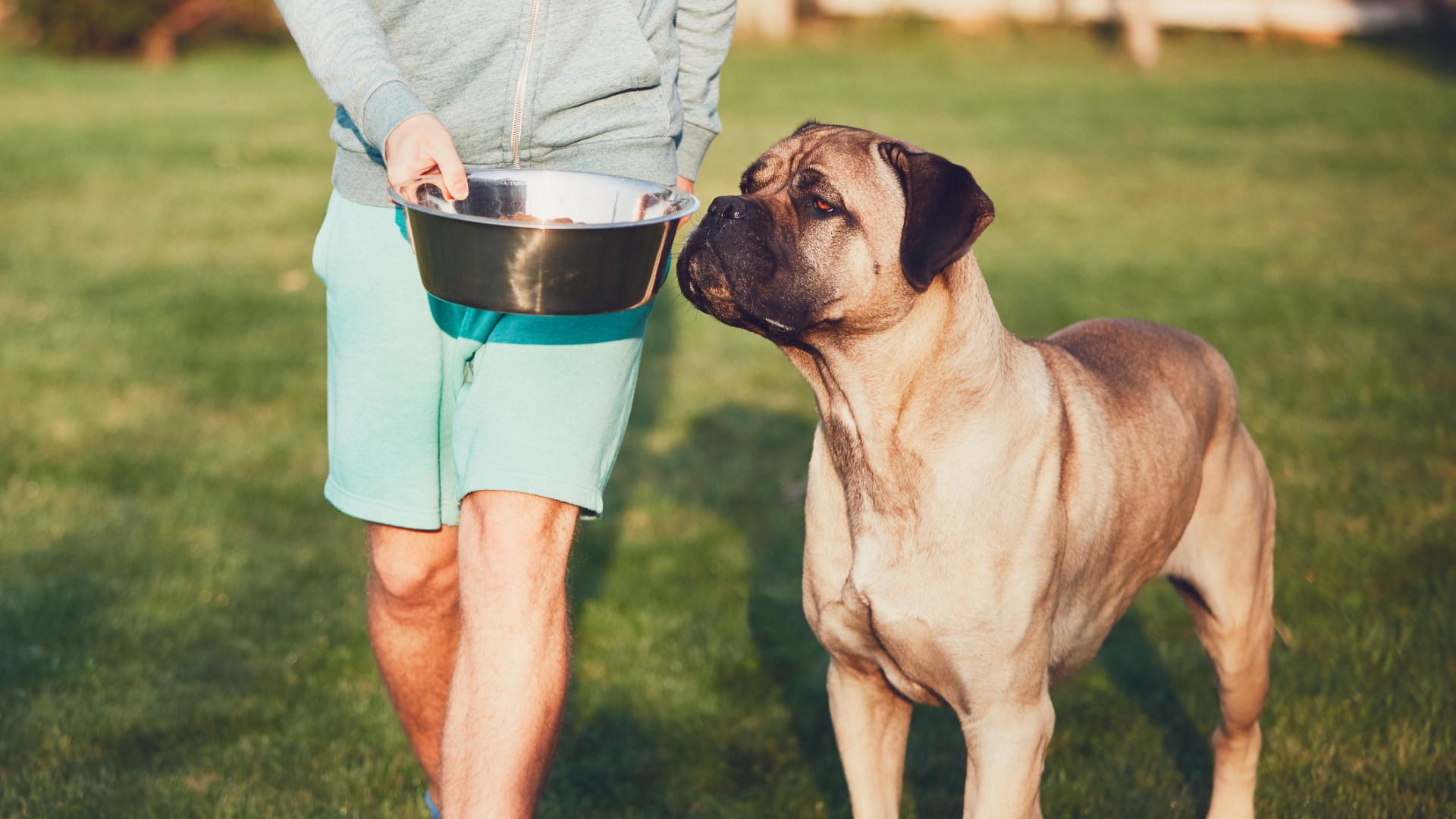
Some dog food brands create recipes tailored to the needs of large dogs. With their larger frames, big pups need an increased amount of certain nutrients to support bone and joint health.
The best dog food will be formulated to support the health of large-breed pooches and should contain ideal levels of fiber, calcium, glucosamine, and omega-3 fatty acids. Additionally, dry large-breed dog food features larger-sized kibble.
8. Think about the expenses
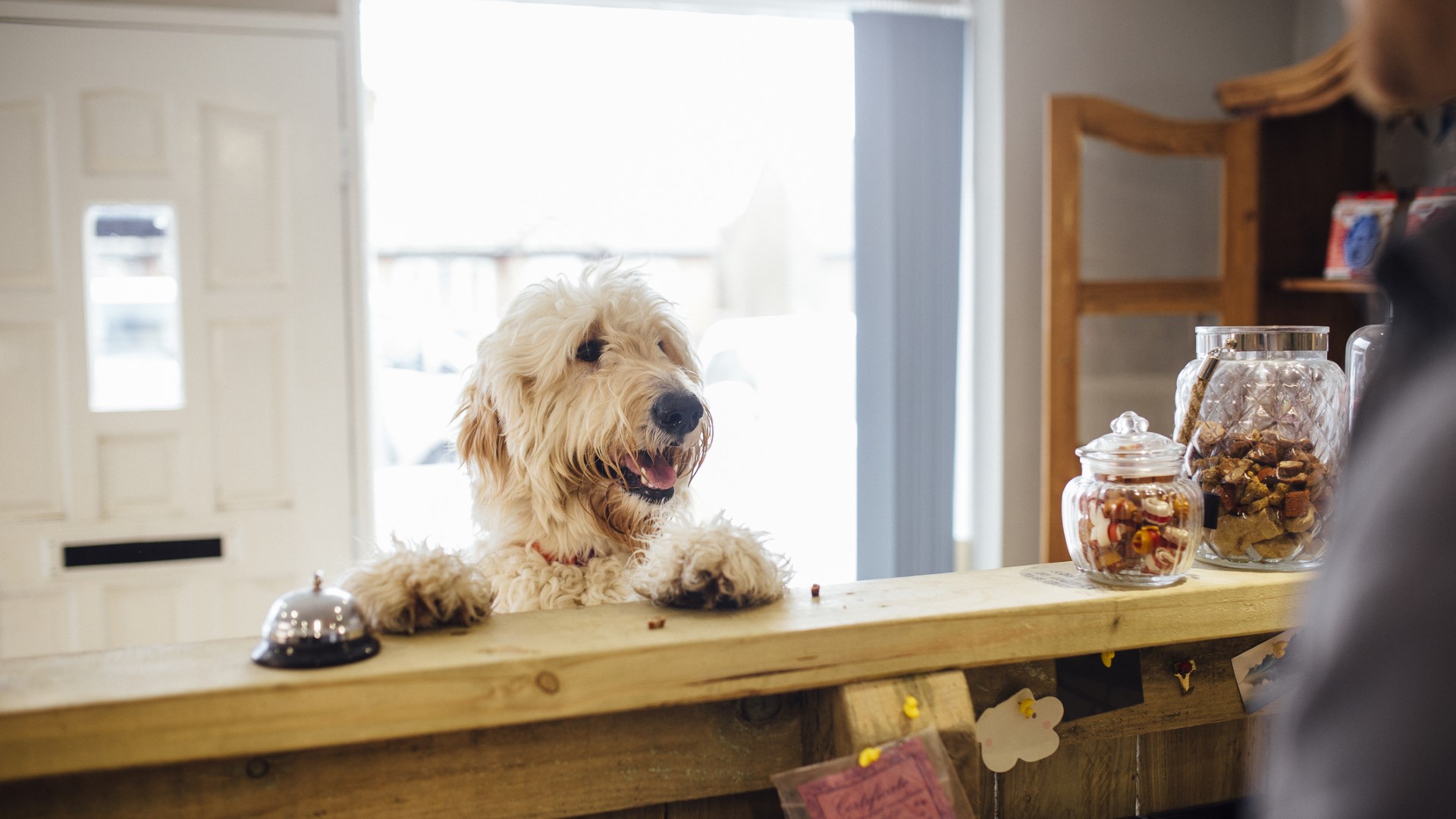
Before adopting a large-breed dog, it's important to consider the expenses associated with a big pup. Their monthly food bill will of course be higher than that of a small breed when comparing the same brand.
Additionally, harnesses, dog coats, collars, and other accessories tend to be more expensive in larger sizes. If you choose to buy supplements for your pup, these will also typically be more expensive since the dose will be higher.
9. Schedule annual wellness exams
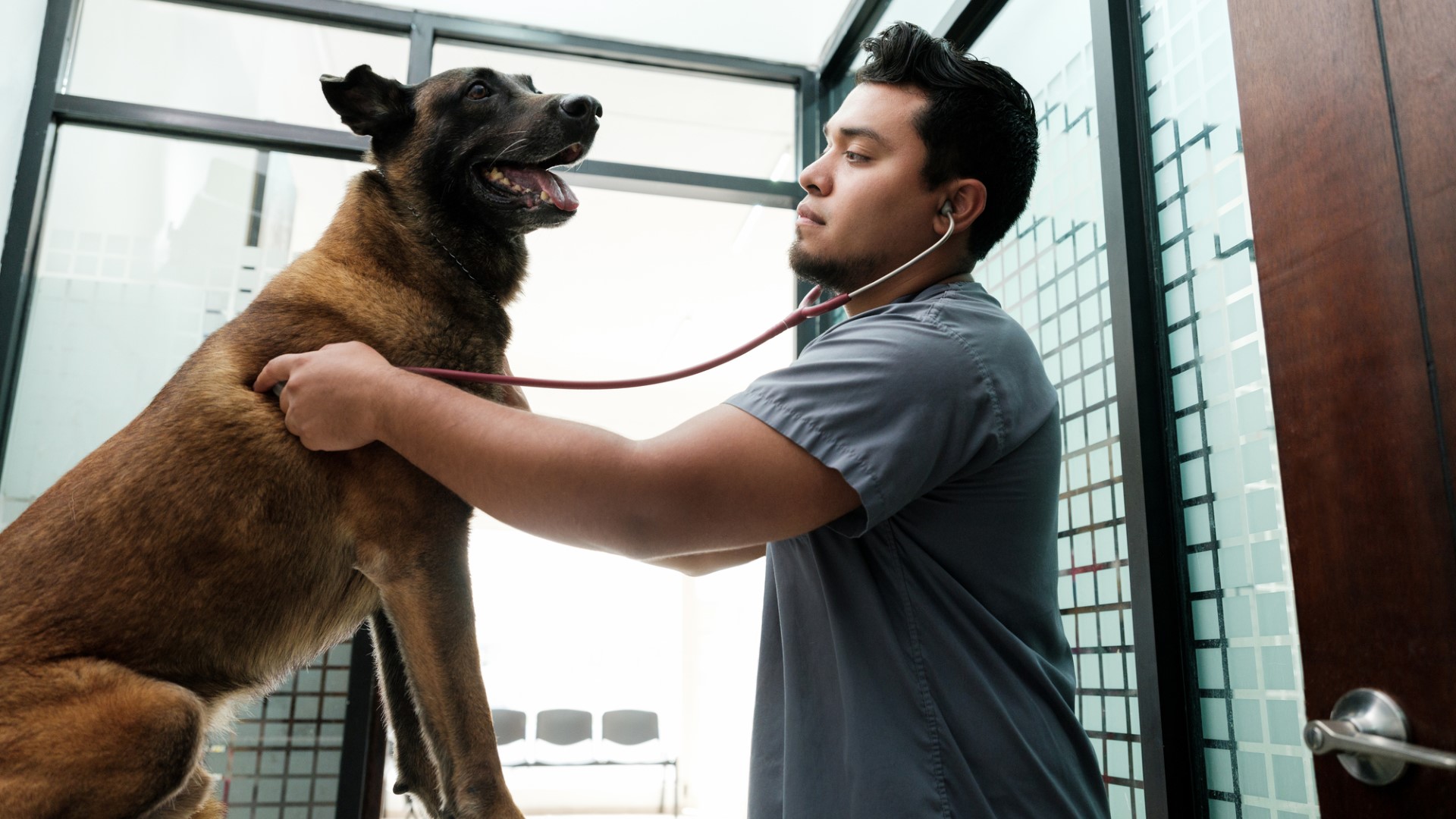
Scheduling wellness exams every six months to one year is a great idea with large-breed dogs, especially in the first four years of their life. Since they mature slower than small breeds, you'll need to schedule more checkups throughout their puppyhood, adolescence, and young adulthood to make sure your doggo is on track developmentally.
During these exams, your vet will likely check your dog over from head to tail. They'll examine their joints, gait, skin and coat, teeth, ears, eyes, nose, and abdomen, take their temperature, and listen to their heart and lungs.
10. Be aware of breed-specific health conditions
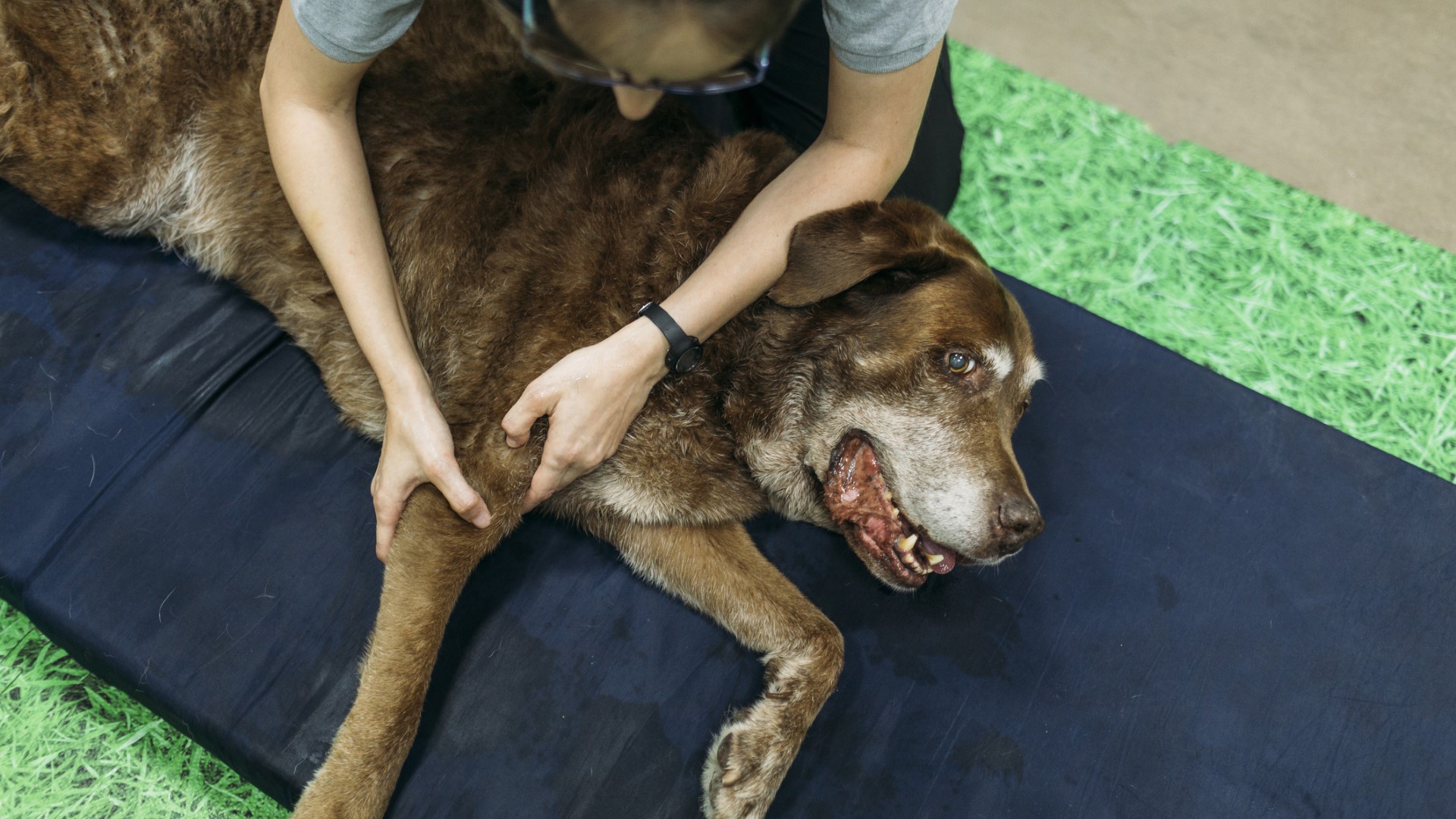
If you are planning on getting a specific breed, it's important to research any increased risks of genetic conditions. For example, purebred labs and German shepherds are at an increased risk of developing hip dysplasia.
Some of these risks can be reduced with preventative care, so speak to your vet about how to best support your individual dog's health and wellness. If you're adopting from a breed-specific rescue, you may also be able to speak to an adoption counselor or staff vet about how to best prepare to support your pup.
11. Remember that large breeds mature slower
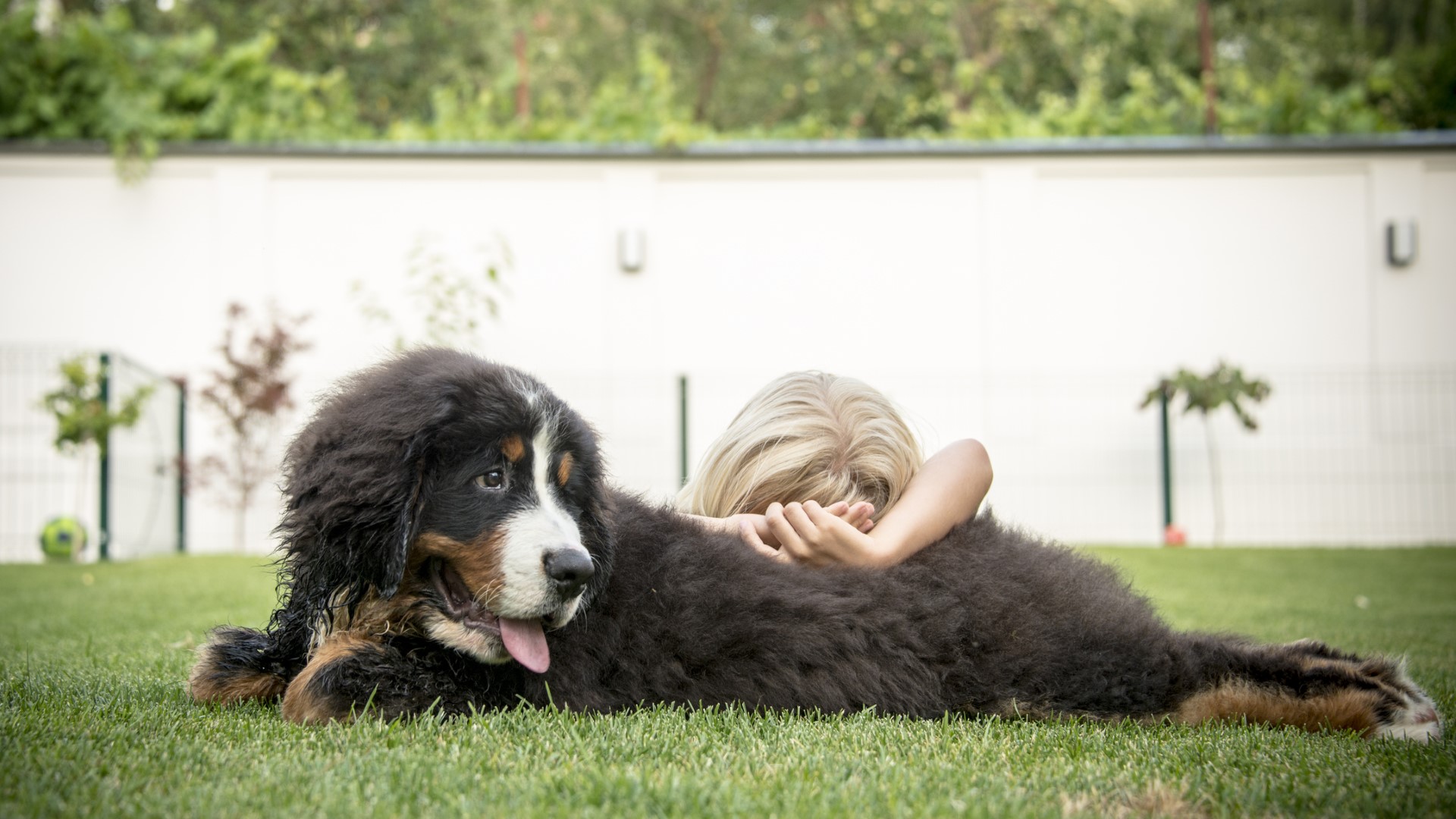
If you're planning on adopting a large-breed puppy, it's important to remember that they will reach maturity later than small-breed pups. This means having extended patience for the ups and downs that come along with puppyhood. For some folks, an extended puppy stage is exactly what they're looking for.
If you're less than thrilled to go through this period of your dog's life, then you may want to adopt a more mature large-breed dog or choose to welcome home a smaller breed puppy. Of course, shelters are full of incredibly loving, large-breed adult dogs looking for their forever home.
12. Be prepared for the adolescent stage
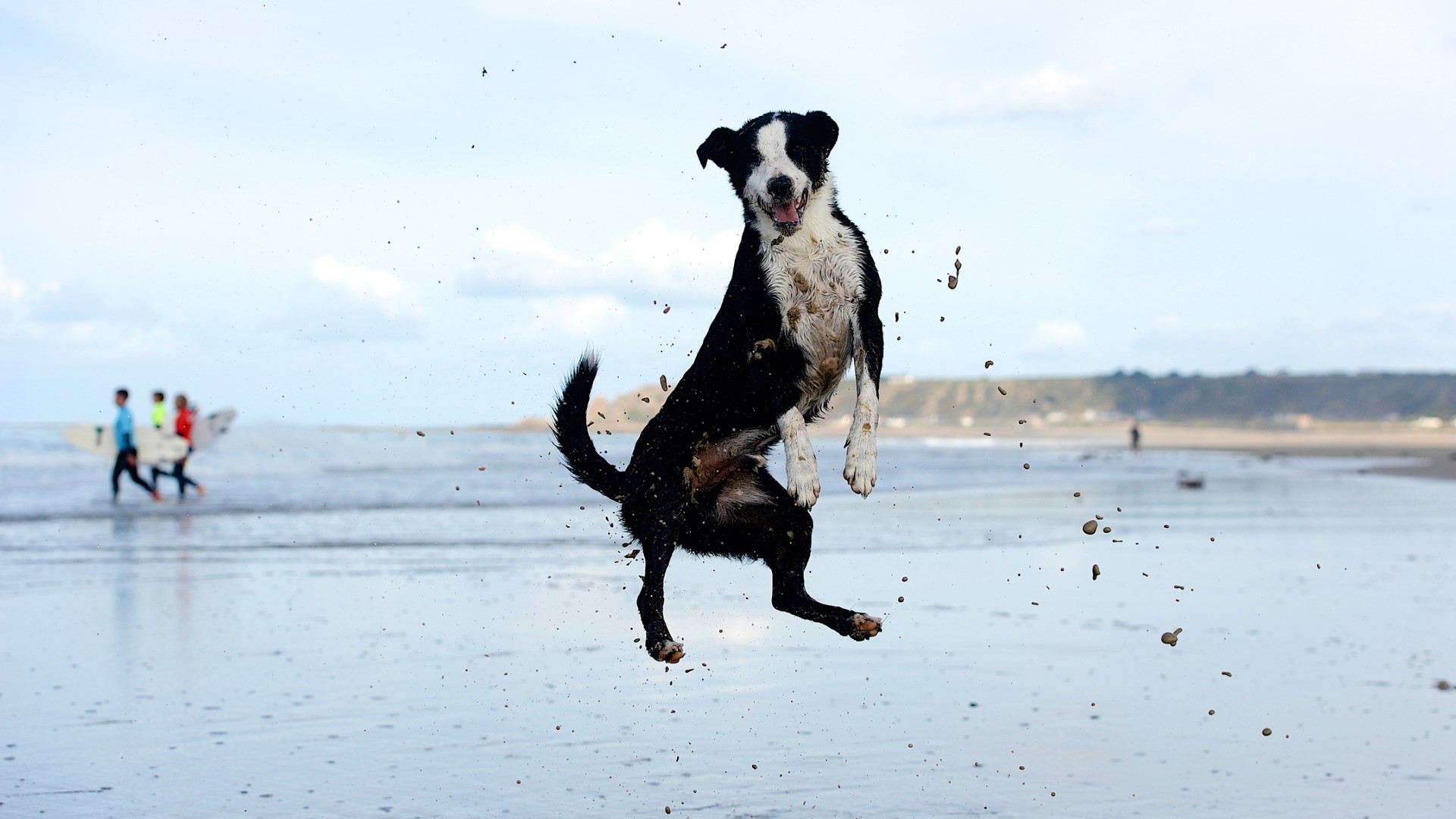
The adolescent stage of a dog's life is often under-represented when we talk about doggie development. Due to their size, large-breed dogs can have quite the rambunctious adolescent phase. In this size range, adolescence usually lasts from 1.5 to 3 or 4 years old. Just like for us humans, adolescence can be a trying time. You may find that your dog develops new fears, wants to explore on their own, or has difficulty settling down during their period.
Providing plenty of enrichment, rest, social bonding, and reward and relationship-based training can help your large-breed dog move more smoothly through the adolescent phase.
13. Understand the early socialization period
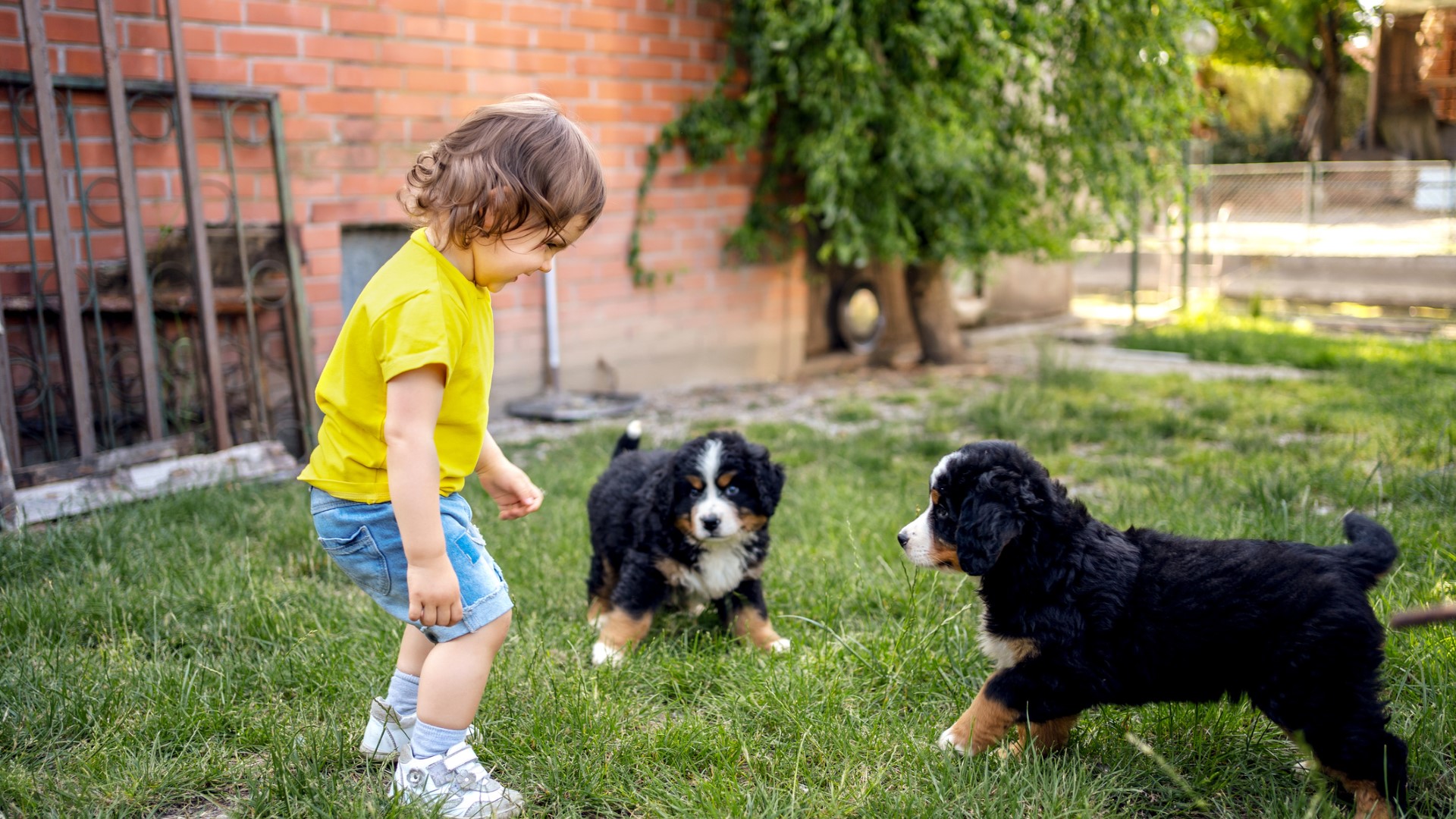
According to the American Veterinary Society of Animal Behavior, the first three months of your puppy's life are the most crucial socialization period. During this time, your puppy's brain is prioritizing, learning, and processing new information.
Proper socialization during puppyhood is extremely important for all dogs, but even more so with a large breed with a lot of weight to throw around. If you're raising your dog from a puppy, make sure to continuously introduce them to new sights, sounds, smells, textures, environments, and social interactions. These introductions should be gentle, and positive, and you should aim to move at the comfort level of your pup.
14. Make sure to socialize well with other dogs
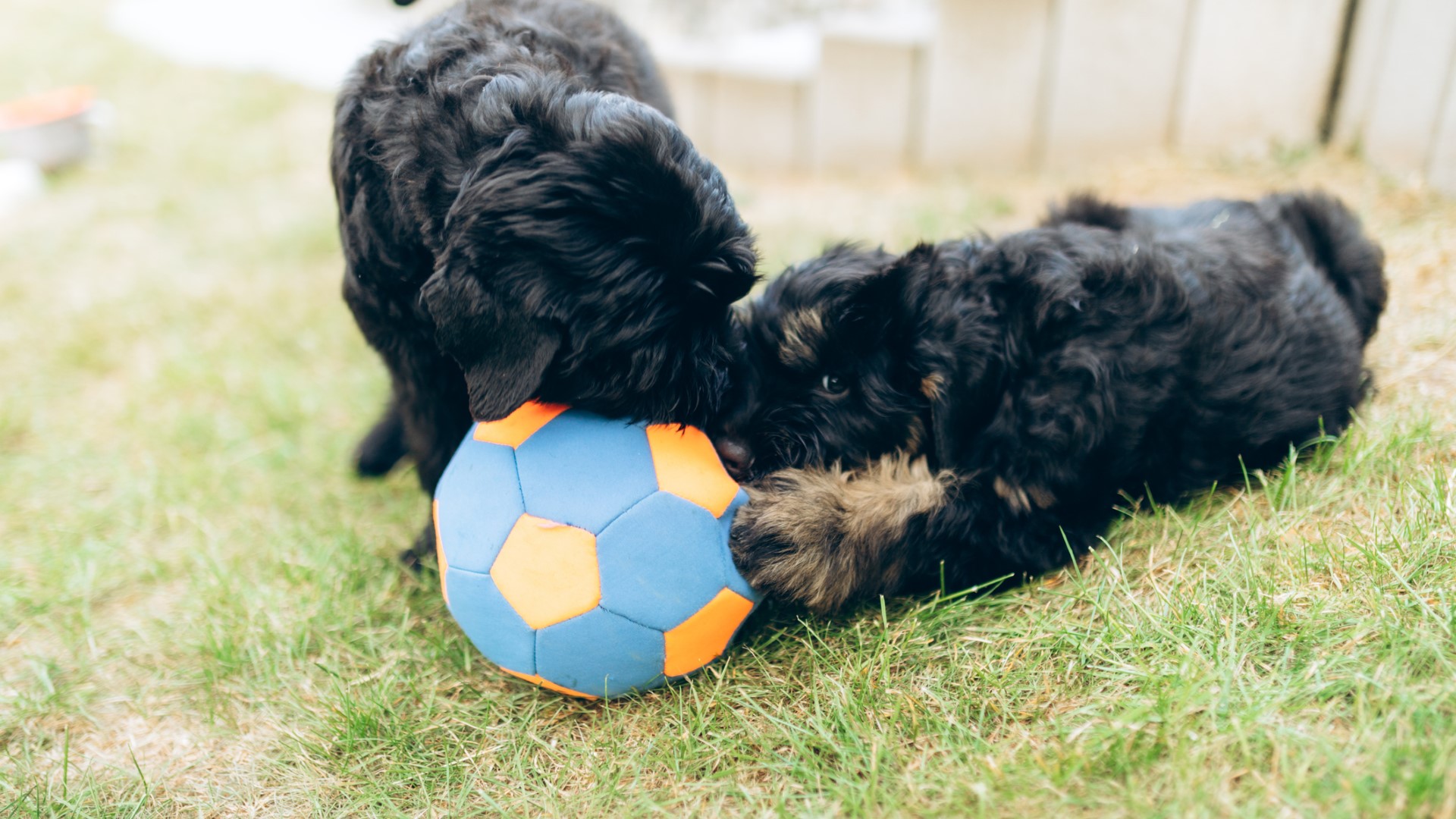
Part of the early socialization period involves meeting other friendly dogs. Since your pooch can grow into a 50 to 100-pound adult, it's crucial to help them feel safe and comfortable around other pups. Reputable, well-structured puppy socialization classes can be a great place to help your dog feel confident and at ease around other canines.
Make sure to pair your puppy up with a friendly, well-rounded pooch. During this time, it's especially important that your puppy feels safe and supported to reduce defensiveness. If they're feeling acutely uncomfortable or overwhelmed, it's better to remove them and help them process from a distance than try to force interactions. Some puppies need to scent process and take in information at a distance before meeting new puppy pals.
15. Socialize your large dog with other animals
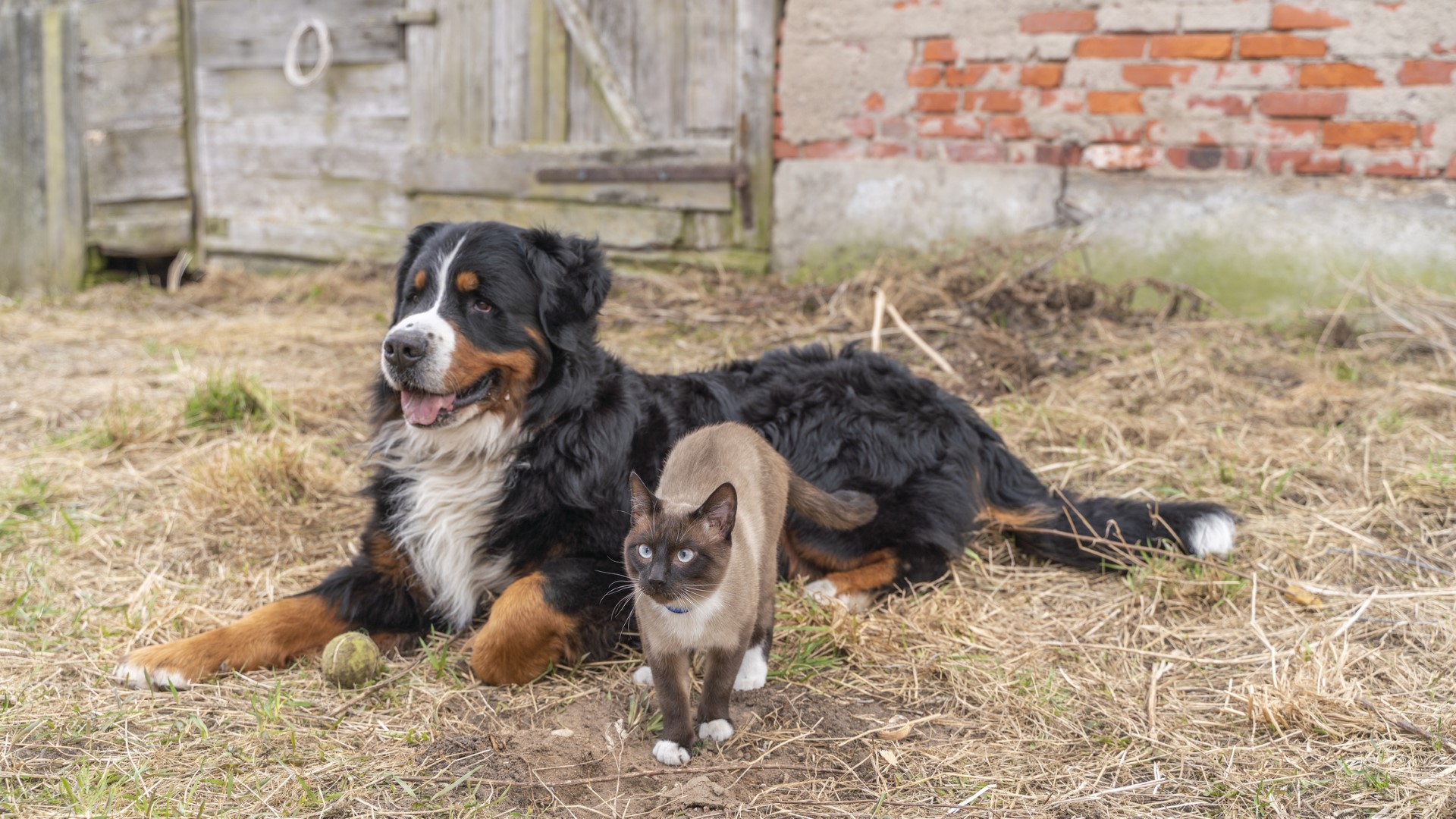
In addition to ensuring your large-breed puppy has plenty of positive interactions with a range of other dogs, it's also ideal to socialize them with other animals. Depending on the environment you live and socialize in, you may want to teach your pup to be relaxed and gentle around a range of other pets and livestock. The earlier you begin this process, the better.
Cats are perhaps the most common non-dog pet that pups share households with. Even if you don't have a cat in your house, it's a good idea to socialize your large pooch around kitties just in case you come across them at the vet's office, a friend's house, or decide to adopt one in the future.
16. Make sure to prioritize enrichment
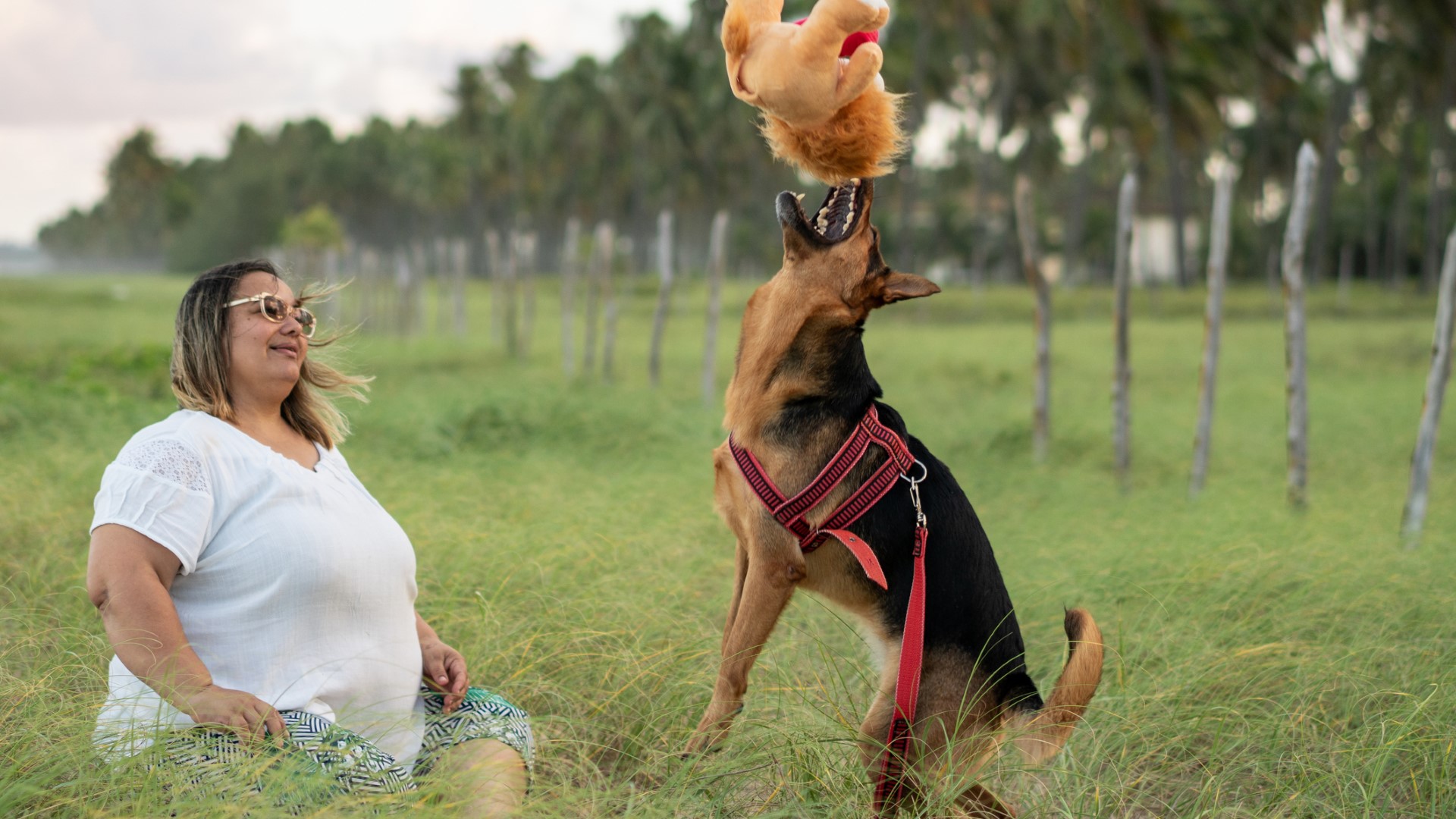
Big dogs can become quite destructive if their enrichment needs aren't consistently met. This is especially true for higher energy or working breeds. Providing daily social, physical, and mental enrichment can help your big pup lead a fulfilling life and reduce the likelihood that they become destructive from boredom or frustration.
You can stock up on the best dog puzzle toys to make meals more exciting, hide treats in, and help stimulate their mind.
17. Know the expected weight range of your large-breed dog
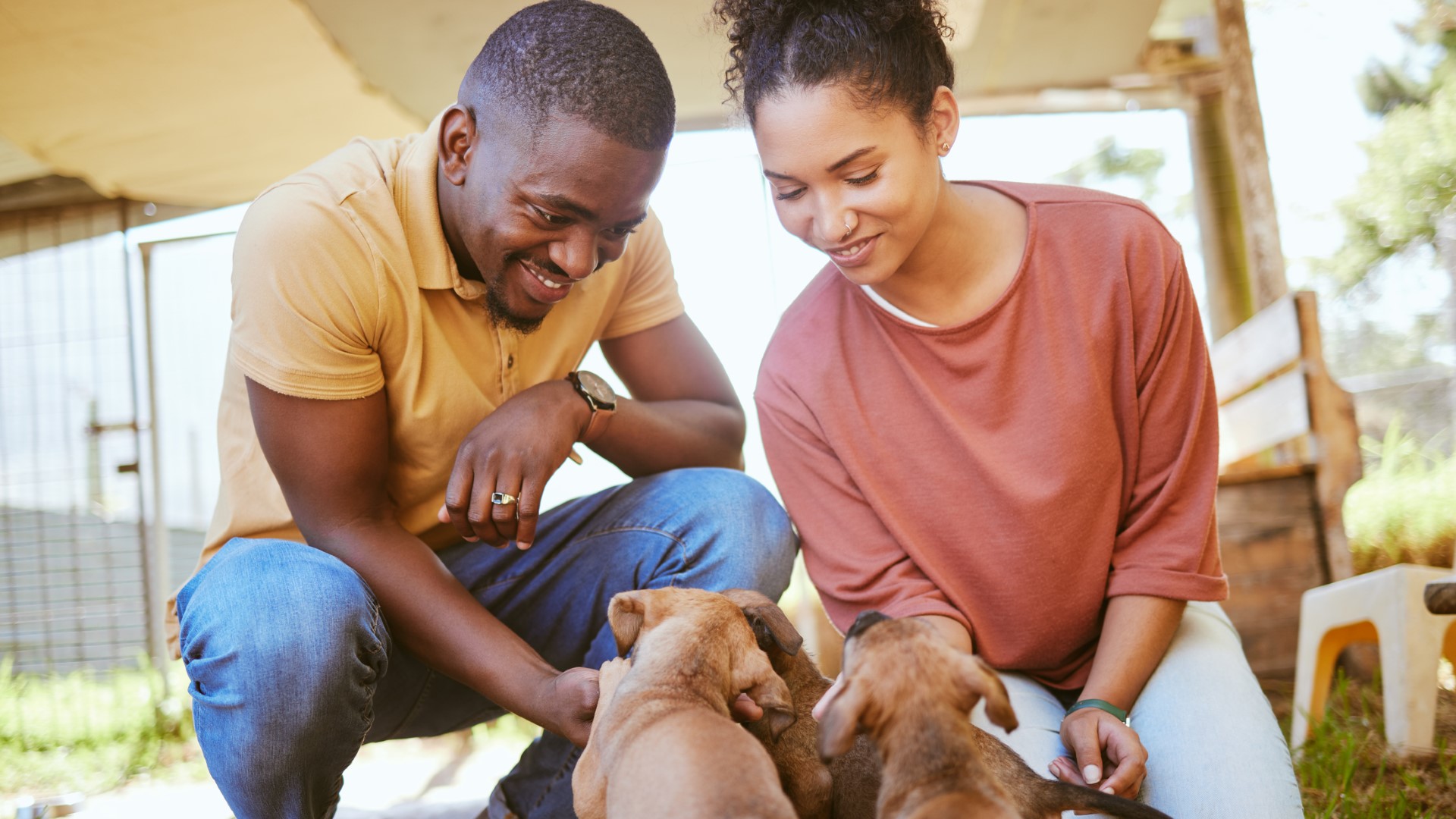
The weight range for large-breed dogs can vary significantly. Before adopting a large-breed puppy, it's important to consider how big they might get. This can be a bit tricky for mixed-breed dogs, but you can usually ballpark a size based on how big their paws, ears, and tail are in relation to the rest of their body.
If you are adopting from a rescue or shelter, you can ask for an estimation of an expected adult weight range. If you know the breed of breed mixes, you can also research average adult weight ranges to get an estimation.
18. Use positive reinforcement training
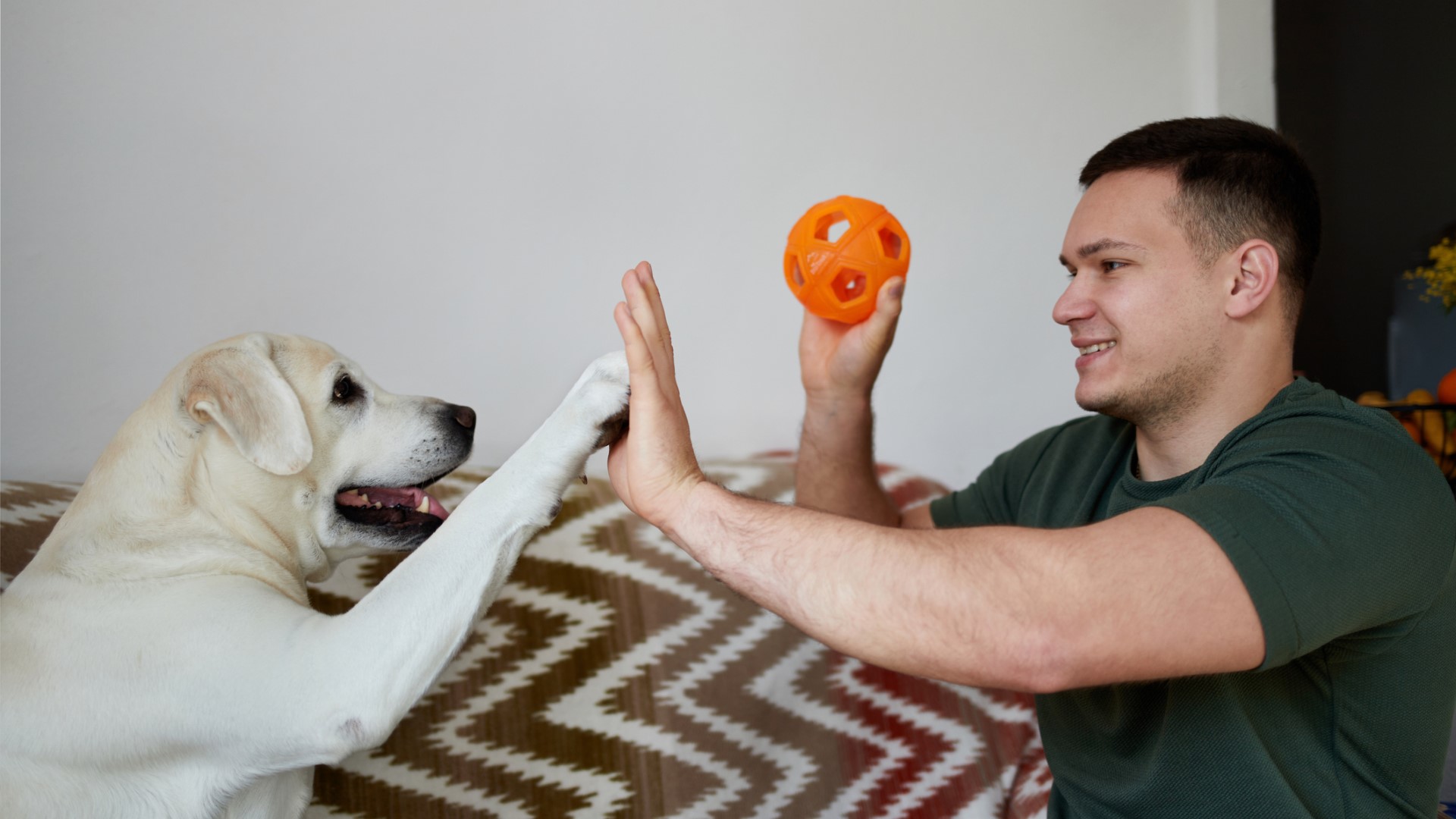
One of our tips for training a dog on your own is to use positive reinforcement. Practicing positive reinforcement means you'll use treats, toys, and play to teach your pup and reward them for desired behaviors.
Myths abound about needing to use harsh methods and punishment when training large-breed dogs, but this simply isn't true. In fact, according to the Australian Veterinary Association, using punishment actually increases the risk of aggression because the dog feels understandably scared and defensive.
By using rewards to teach your large-breed dog skills and cues, you're contributing to the development of a strong bond based on trust and good experiences.
19. Prioritize developing a secure attachment bond
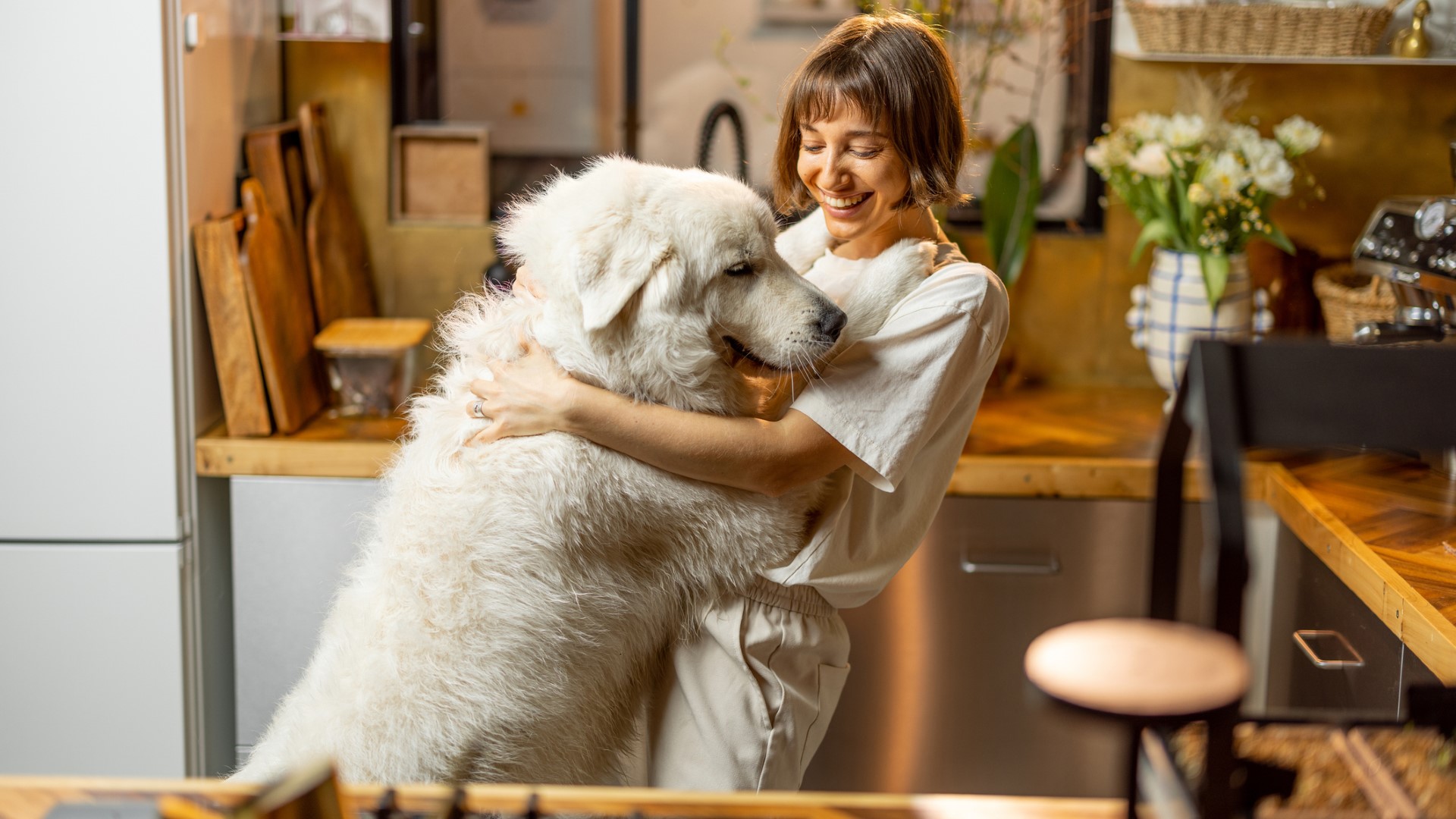
According to a study in the journal, Psychology Research and Behavior Management, dogs form attachment bonds to their primary human caregivers in a similar way that human infants bond to their parents. By developing a secure attachment bond with your large-breed doggo, you'll help them feel safer and more relaxed while navigating the world.
Dogs who feel safe are far less likely to react defensively to their environment. For big and powerful dogs, it's especially important to help them not feel defensive or on edge as they navigate our human-dominated world.
20. For large-breed puppies, stock up on teething toys
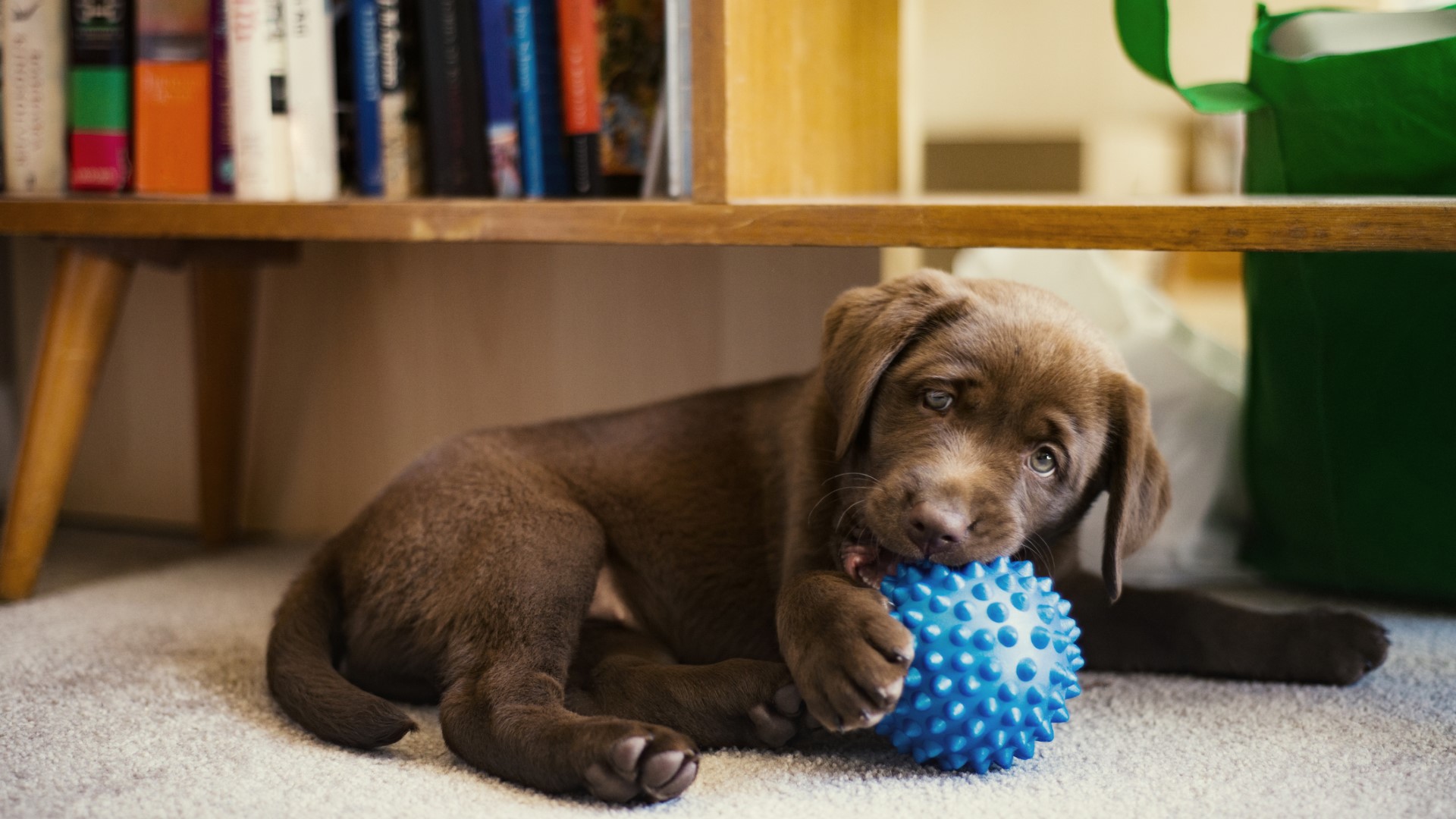
As your large-breed puppy grows, it's important to provide them with plenty of safe teething options. Teething can start at about eight weeks of age, although it typically ramps up once their baby teeth begin falling out at around 12 weeks. Teething is typically the most intense between three to six months of age as the permanent teeth are erupting from the gums.
By about six to seven months old, your pup should have a full set of adult teeth. To help you, your puppy, and your shoes make it through the teething phase, make sure to stock up on the best teething toys for puppies. You can also freeze carrots and low-sodium broth into cubes for them to work on.
21. Invest in durable chew toys
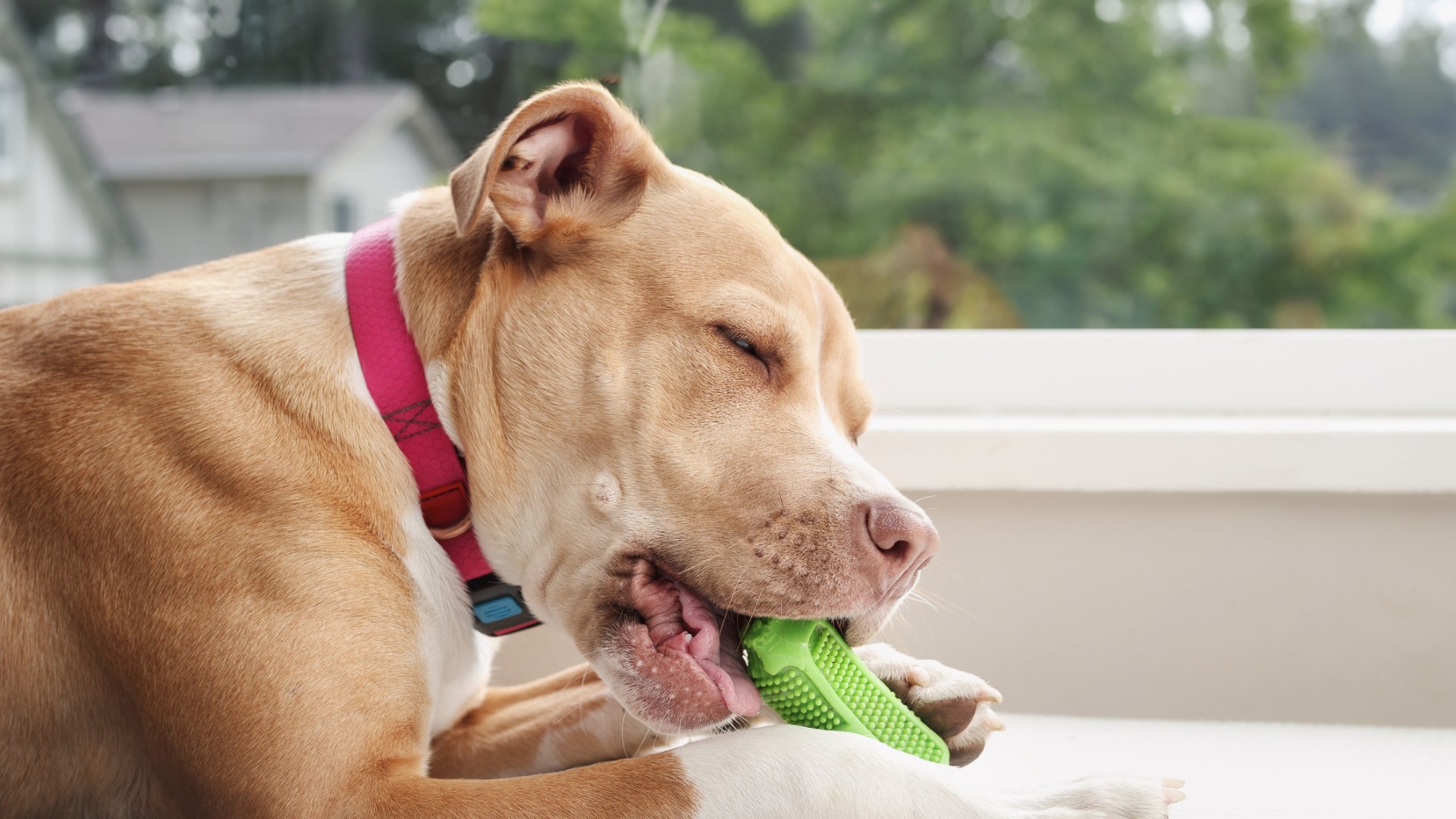
With their strong jaws, large-breed dogs can easily destroy non-durable chew toys. If your large pooch is an enthusiastic chewer, we recommend investing in some of the toughest dog toys.
While high-quality, durable toys tend to be more expensive, you'll save money in the long run by not having to constantly replace vanquished chewies. Additionally, your big pup will likely have more fun if their toy isn't destroyed in a matter of minutes. For some especially strong chewers, you may need to only bring out toys under supervision.
22. Teach loose leash walking
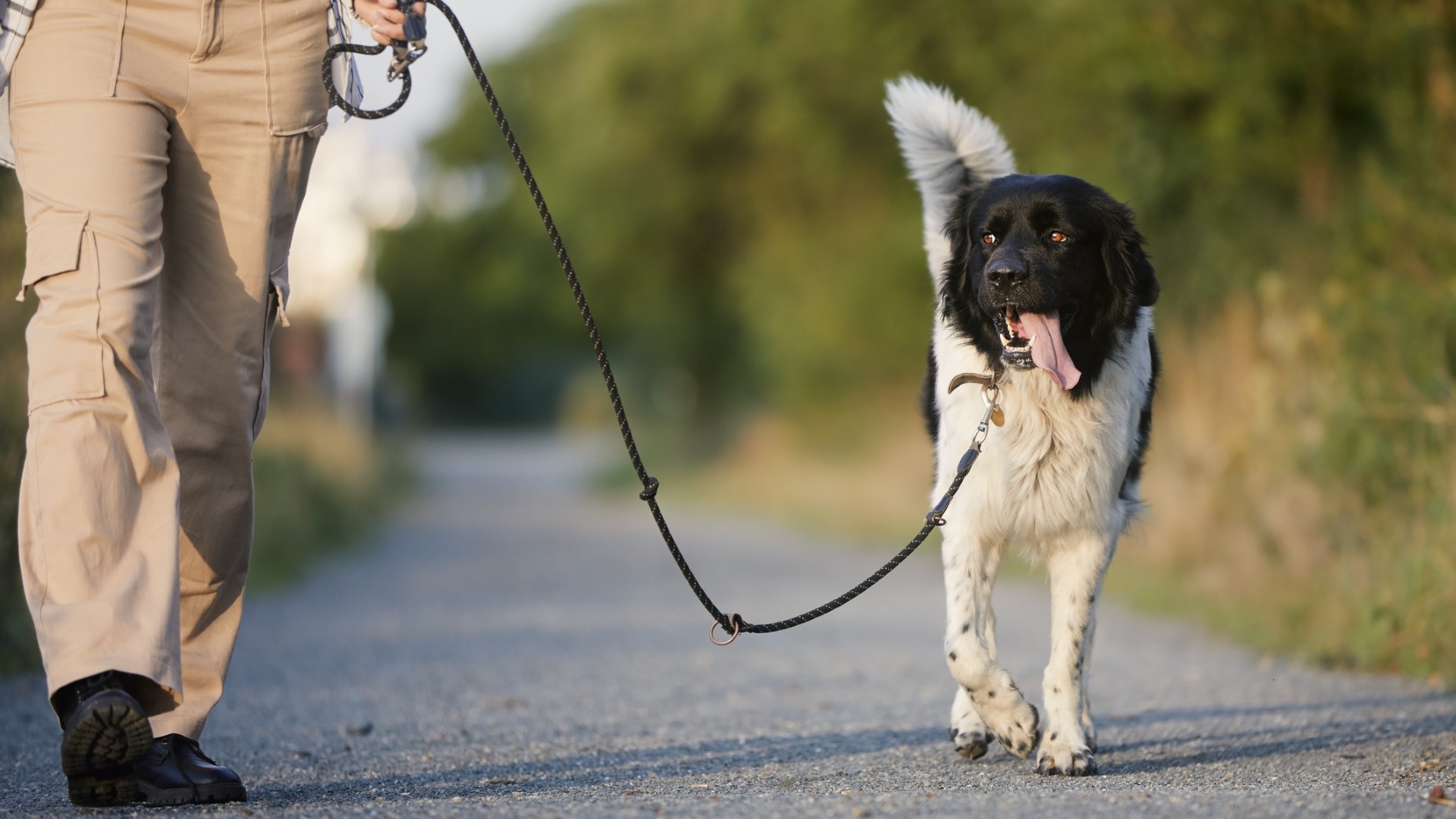
Loose leash walking is an awesome skill for any dog to learn. But when you add a large size to the equation, it becomes a much more important skill to intentionally teach. No one enjoys being pulled along by a big doggo on a walk. You can use positive reinforcement to motivate your pup to not pull or strain at the end of the leash by rewarding them for walking next to you or not at the end of the lead.
For casual walks, it's best to allow your pup space to sniff and process their environment on a long lead. Reward them with treats for pausing before they hit the end of the lead. Scattering treats on the ground as you walk and offering treats by your side can also help encourage your large dog to shift away from straining at the end of the leash.
23. Consider investing in joint supplements
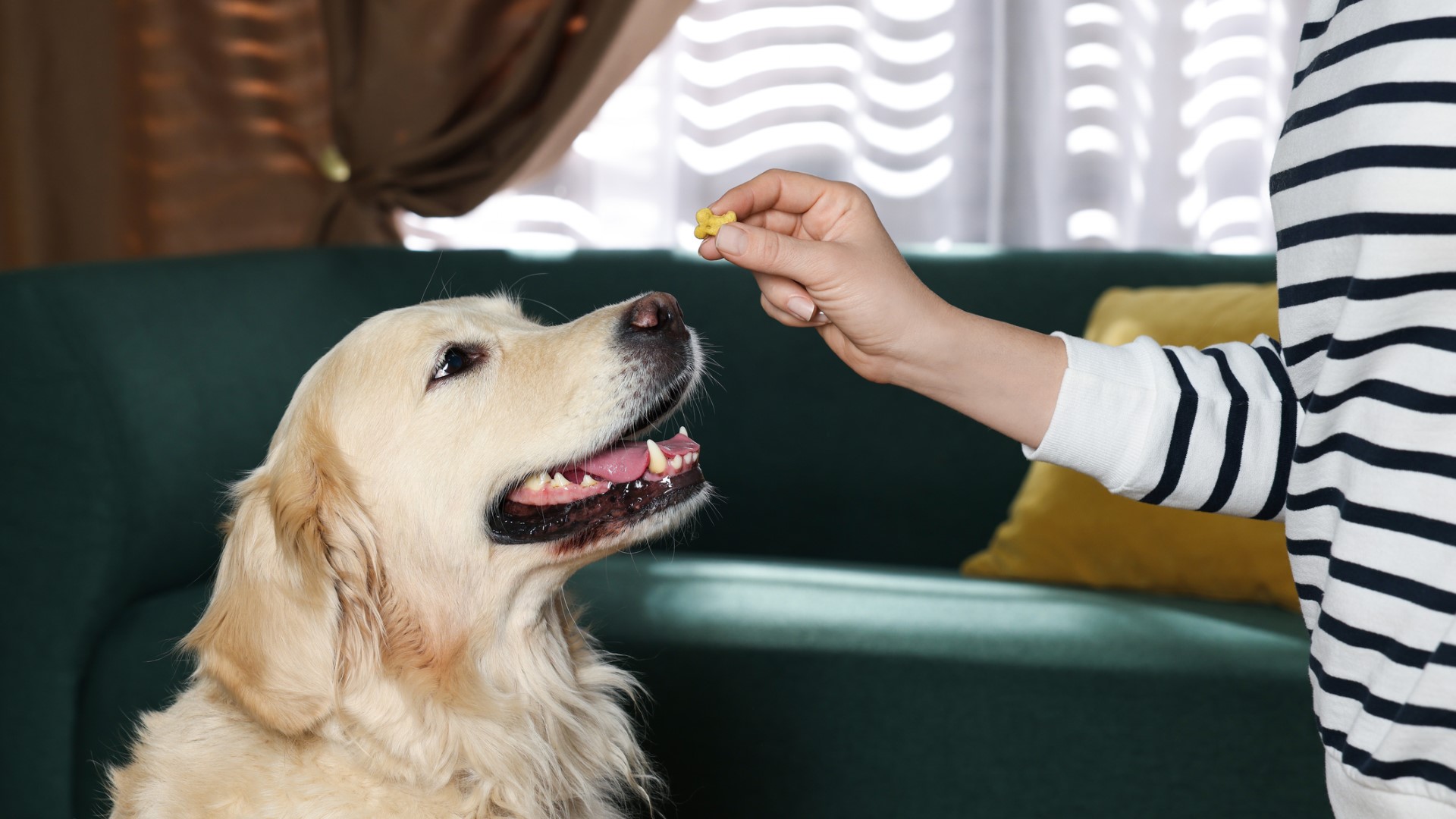
Some large dog breeds have an increased risk of developing joint and hip conditions. These conditions may be present from a young age or develop as they age. Keep an eye out for any gait changes in your pup, signs of discomfort, difficulty sitting, or difficulty standing from a sitting or lying position. If you're concerned about your large dog's comfort, it's best to set up a vet appointment to help navigate joint pain in dogs. Note that sudden behavior changes can also be a sign of discomfort.
Adding joint supplements may help keep your dog's joint healthier and your pup more comfortable, so consider consulting your vet about the possible benefits.
24. Practice recall
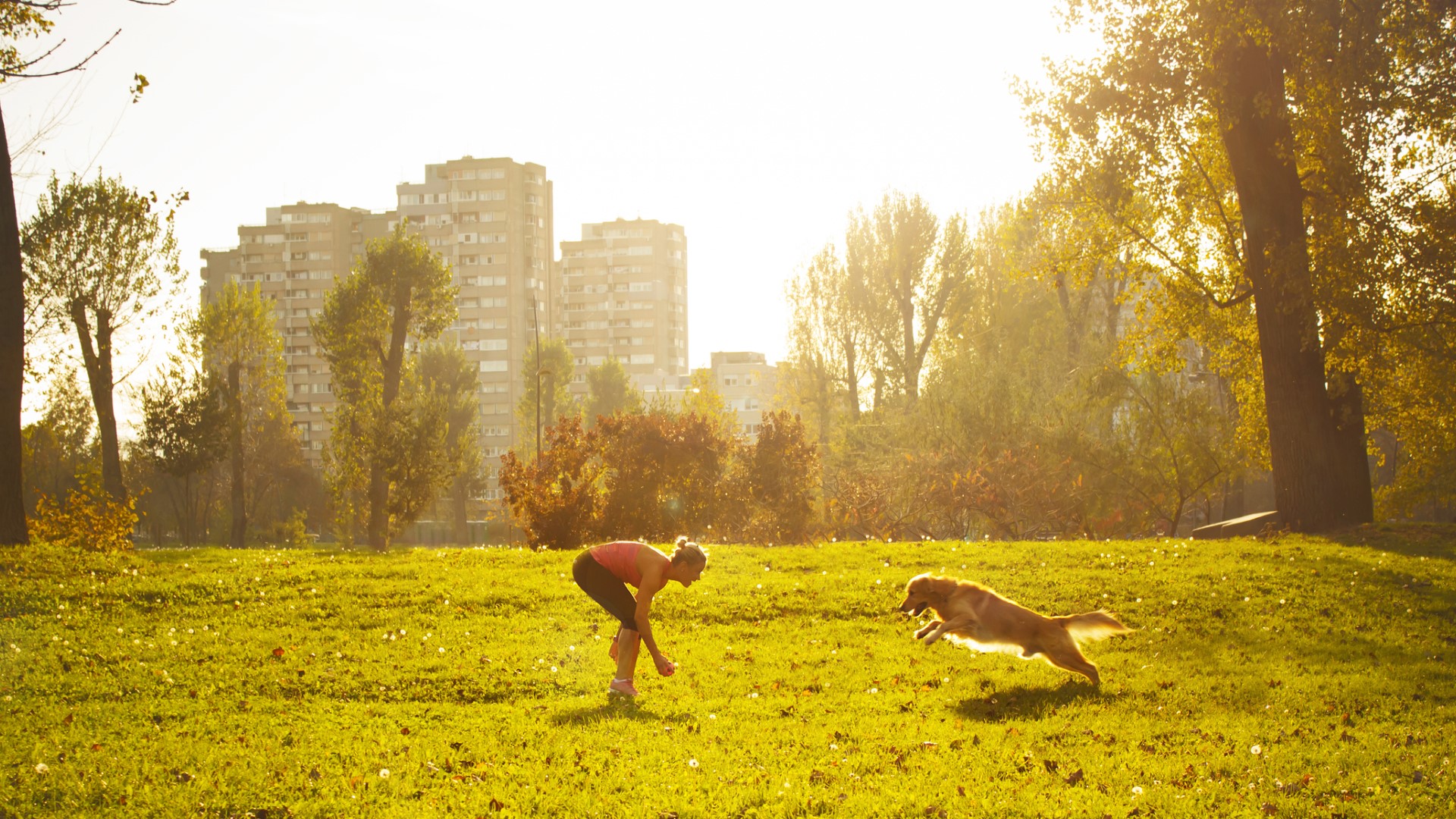
A solid recall is an important skill for any pup to learn and large-breed dogs are certainly no exception. When rooted in bonding and positive reinforcement, a consistent recall is also a sign of a great relationship. You can start teaching your big pup recall skills starting at eight weeks old. The key is to associate returning to you with wonderful things. Using playtime, snuggling, toys, and treats are all excellent ways to reinforce consistent recall.
Start by calling your pup to you from only a few steps away in a low-distraction and quiet space. As your pup succeeds, practice in a more dynamic space and at a greater distance. In some high-distraction environments, it's a good idea to use high-value food (ie. the most delicious, fresh, and smelliest treats) to heavily reinforce and reward the recall.
25. Invest in a comfortable, large bed
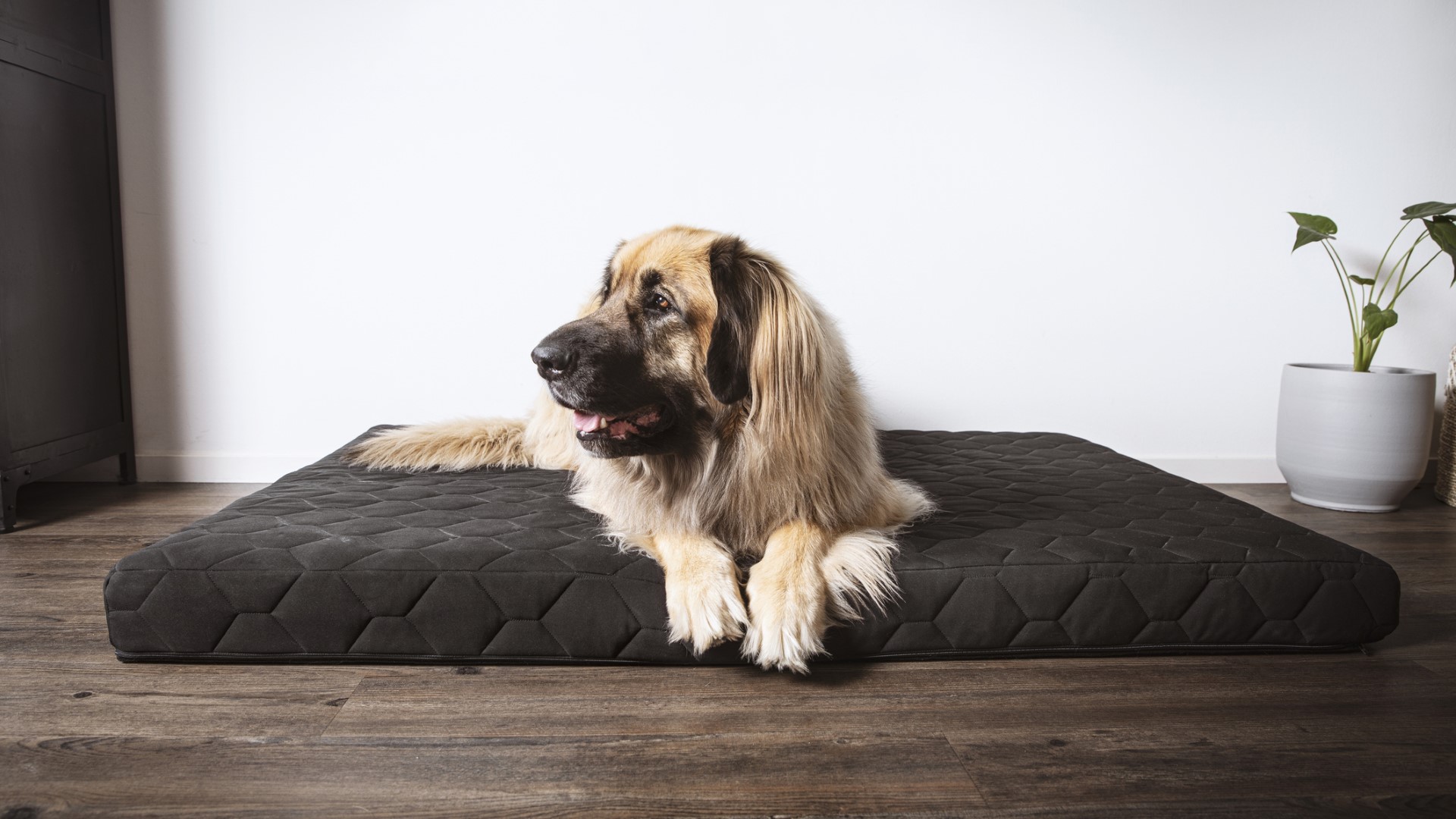
Big doggos need one of the best large dog beds! It's important to provide your pup with a comfortable space of their own to stretch out or curl up. If your dog has arthritis or other joint issues, consider investing in one of the best orthopedic dog beds. These beds are typically quite thick and supportive, allowing for comfort while lying down and an easier time when standing back up.
If you live in a high-energy household, ideally, you'll want to set up this dog bed in a space where your pup can rest without being disturbed.
26. Understand the importance of rest and sleep
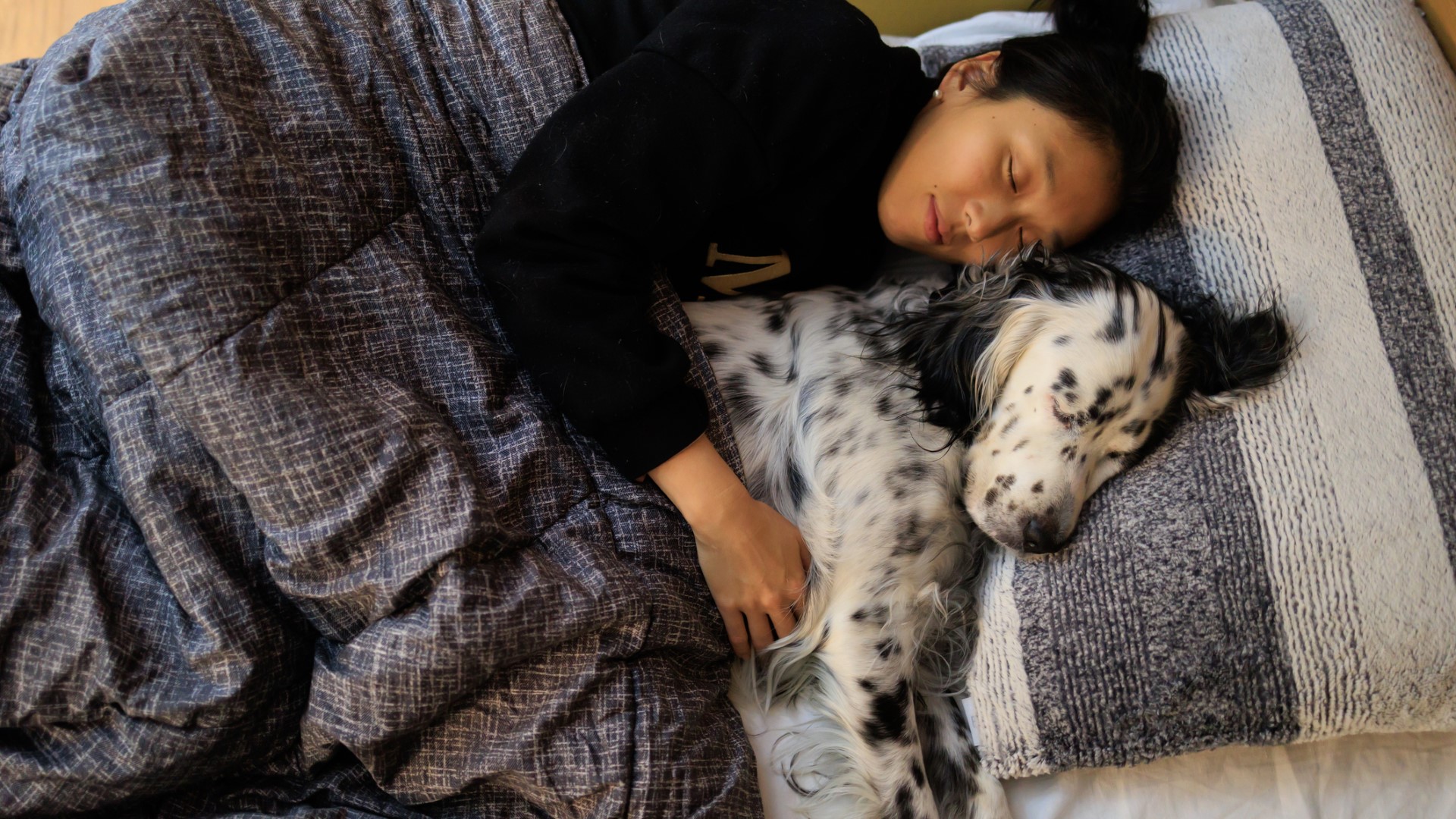
Restorative rest is crucial to your dog's mental and physical well-being. An adult large-breed dog needs about 12-16 hours of sleep per day. If your big pup is constantly bouncing off the walls and can't seem to settle down no matter how many activities you do, as counterintuitive as it may sound, they might actually need more rest. Hyperactivity is often a sign of your pup having non-restorative or not enough sleep.
Setting up a comfortable and quiet place for them to nap during the day, in addition to providing a comfortable overnight space, can help your pup get the downtime they need.
27. Daily exercise in moderation
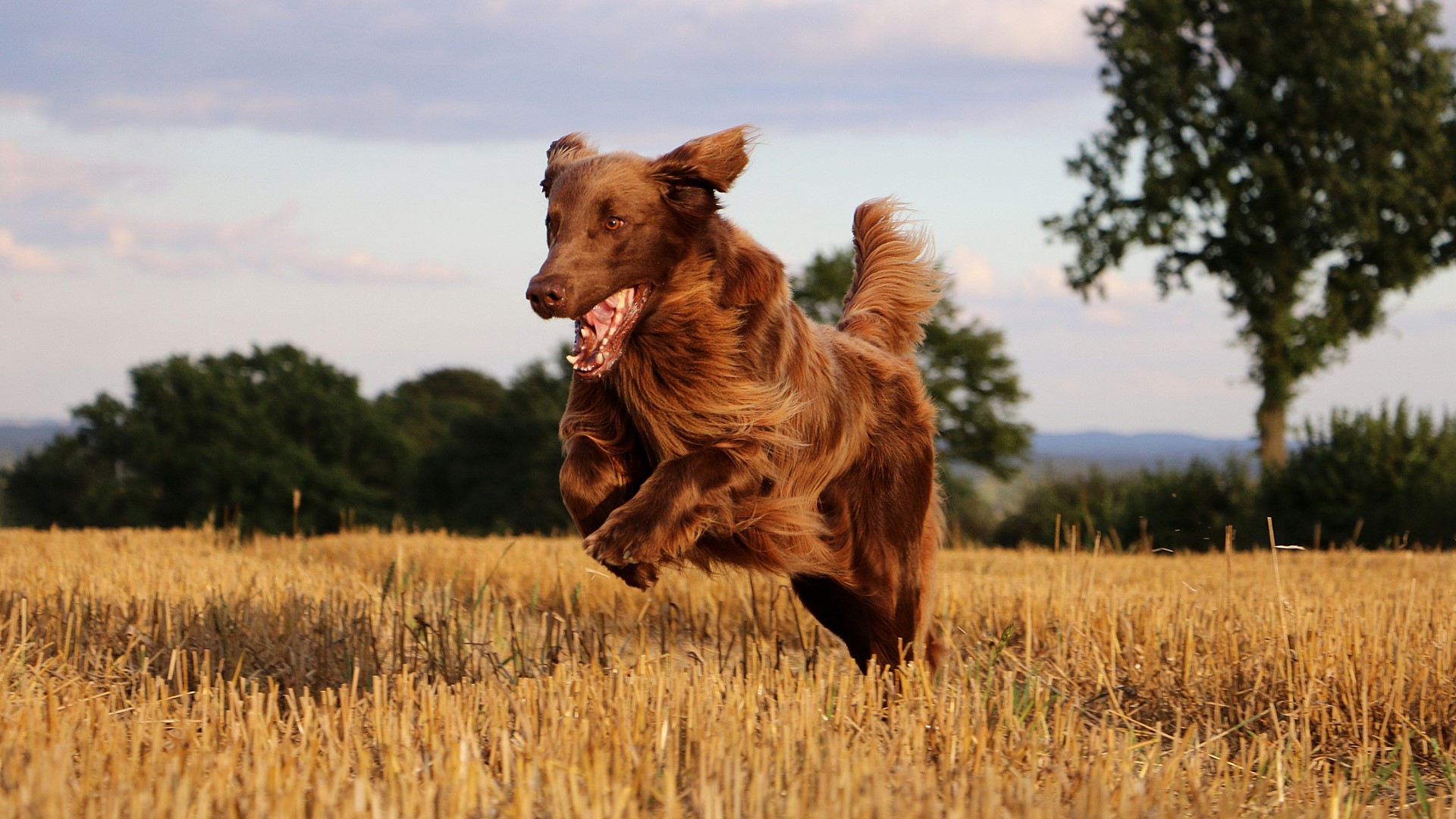
You can support your large-breed dog's mental, emotional, and physical well-being by providing daily exercise in moderation. The time and intensity of the exercise will depend on your dog's breed and individual health and enrichment needs. Be cautious of over-exercising your pup or encouraging them to perform repeated sharp turns and rapid braking.
According to Canine Arthritis Resource and Education, high-intensity and repeated games of fetch can cause damage to your dog's ligaments, especially if they are prone to sprinting after a ball, rapidly braking, and then performing sharp turns.
28. Practice management to avoid mischief
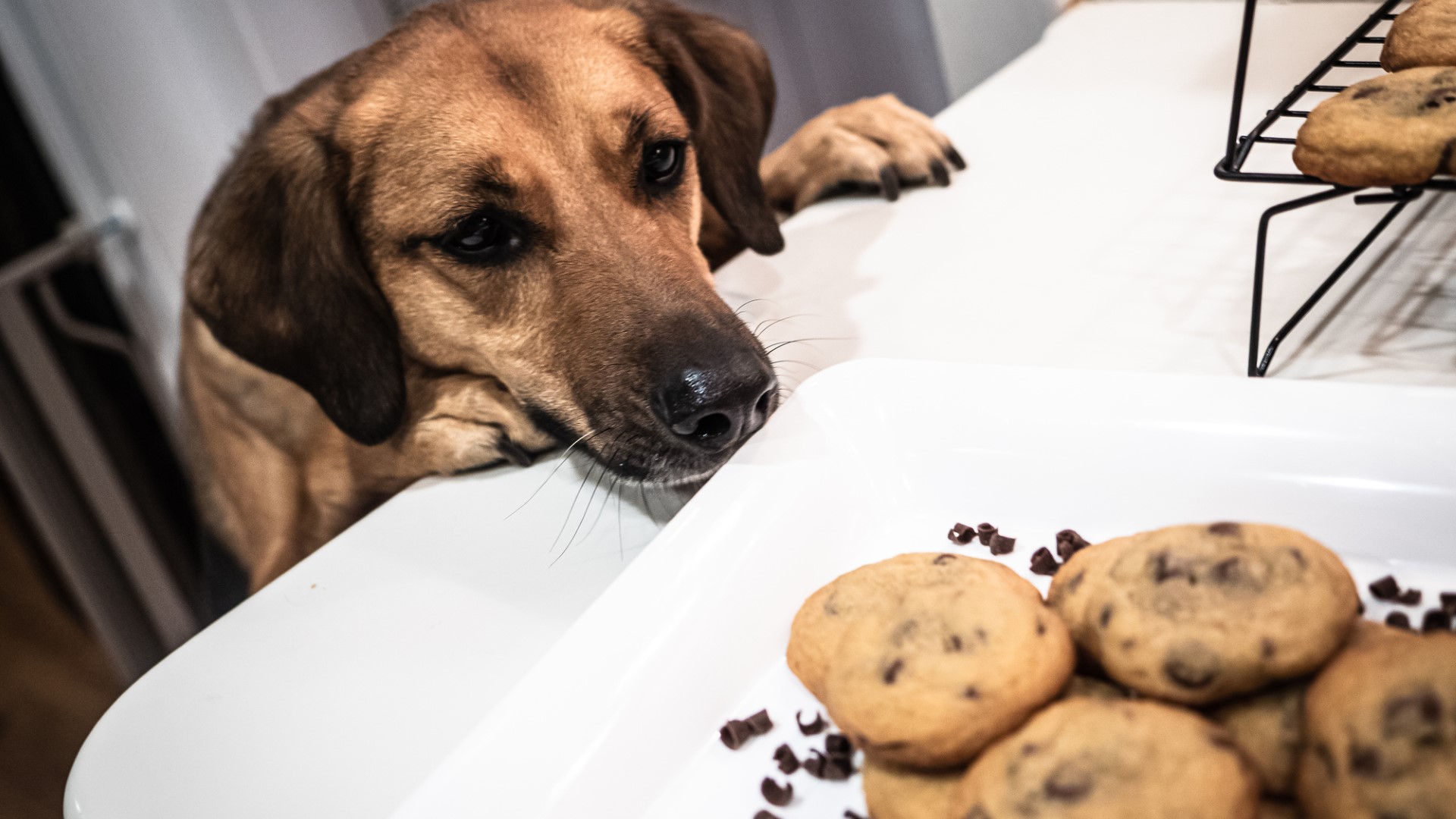
Big dogs can often reach countertops, trash can lids, over short fences, etc. To keep them safe and out of mischief, it's important to practice good management of spaces.
If your dog is a sneak thief when food is left on counters or tables, you may need to ensure nothing tempting is left unattended on them. This is often a much easier practice than trying to teach your dog not to grab food left within their reach. After all, our pooches have evolved as scavengers, so to them, it makes all the sense in the world to eat food as they come across it.
29. Feed your large-breed puppy often
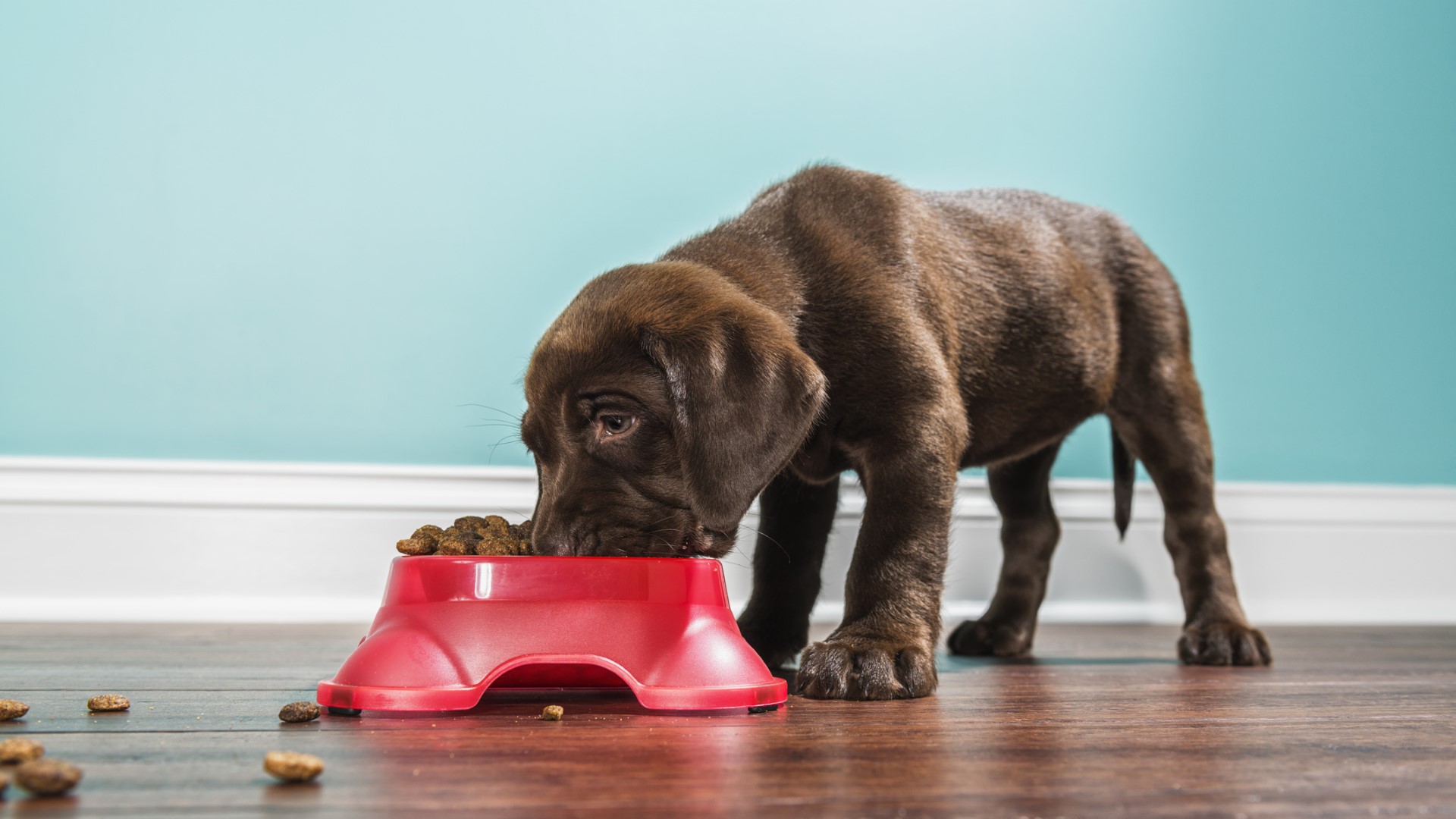
Large-breed puppies should eat three to four times per day to support healthy development. Feeding puppies three to four times per day aids in healthy digestion and keeps their metabolism stable. Make sure to provide the best puppy food that is specifically formulated to support the needs of a growing puppy. Puppy food contains a higher level of fat and protein compared to adult food. Once they reach six months old, you can begin feeding your big pup twice per day.
30. Practice "four on the floor"
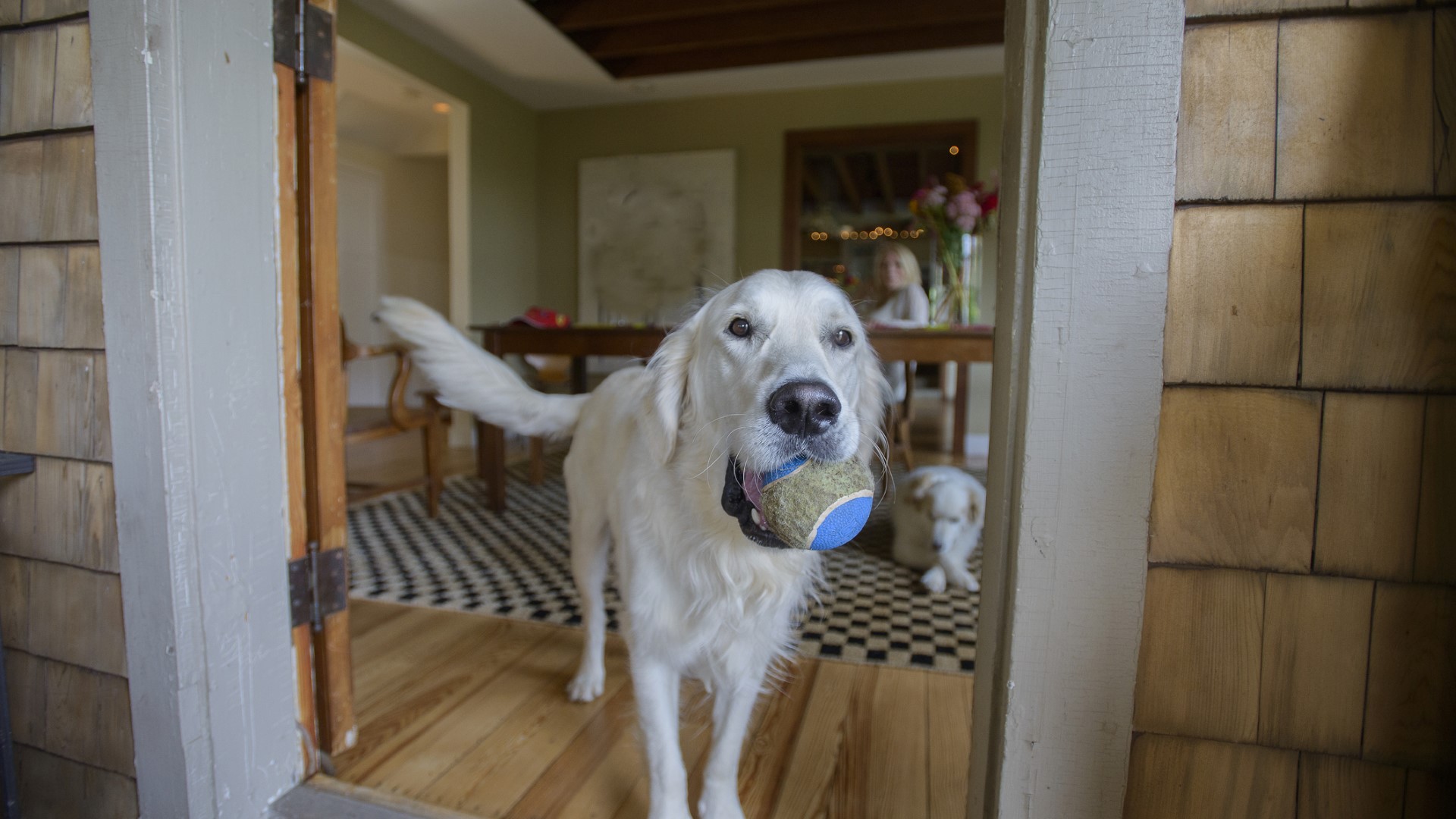
“Four on the floor” is a training phrase that refers to teaching your pup alternative behaviors to jumping on you when they’re excited or need something. For big dogs, this is an especially important skill to practice with your pooch. Large dogs can inadvertently hurt someone by jumping up. To avoid injuries or unpleasant interactions, it’s best to help your dog learn to channel their jumpy energy into other behaviors.
If they jump on you when they need something or are feeling anxious, for example, you can teach your pup to nudge your hand with their nose or stand between your legs instead. When they greet you at the door, you can teach your excitable big pooch to grab a toy from a basket beside the door instead of jumping.
31. Use cooperative care techniques
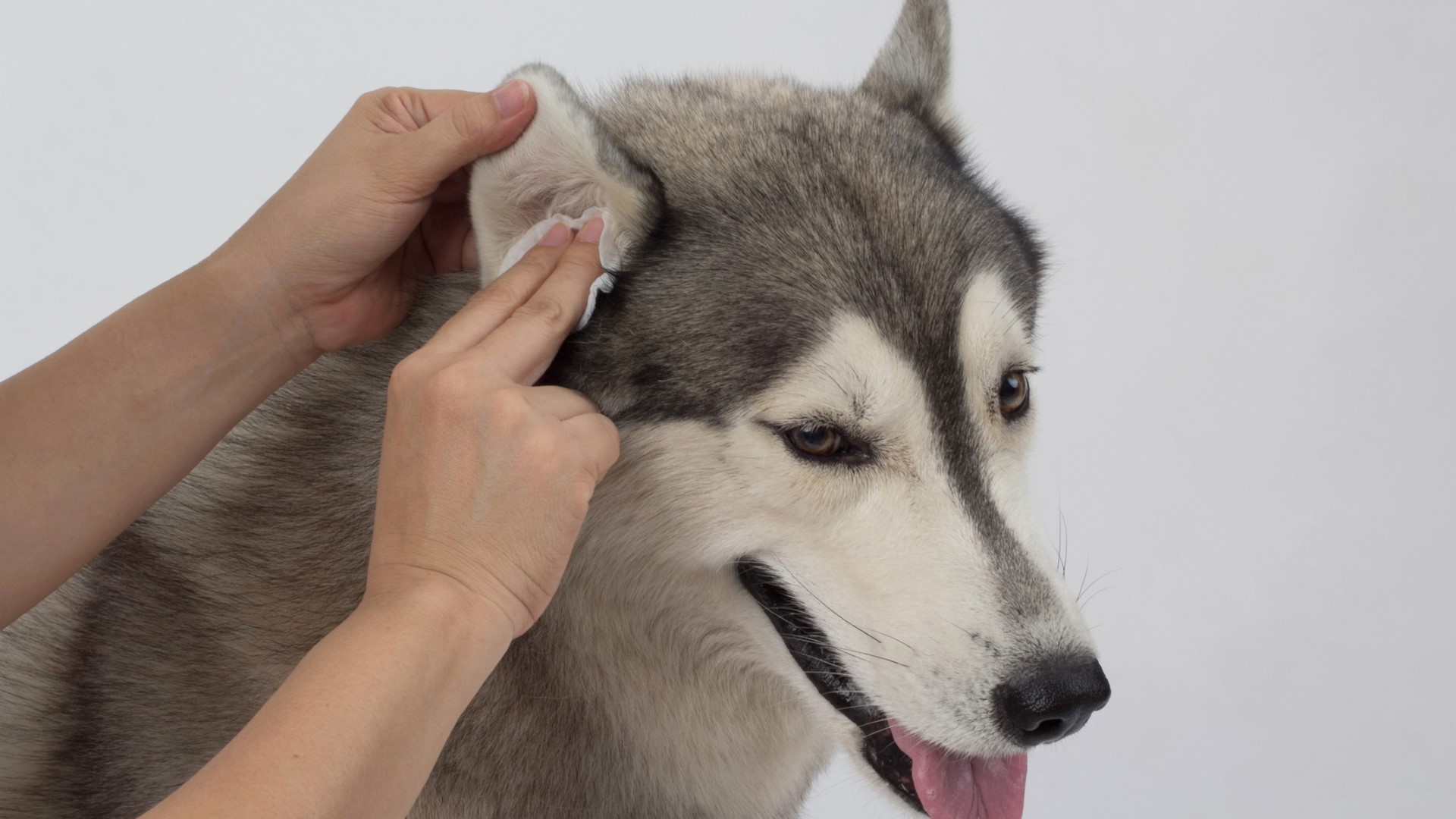
Cooperative care husbandry is the practice of working alongside your pet during care tasks so that your pet is an active and willing participant in the process. Cooperative care involves incrementally introducing your dog to a care task, such as nail trimming, in a manner that helps them feel comfortable with the tools and sensations and allows them to signal when they are ready for you to begin trimming and when they need a break.
Dr. Deborah Jones is a leading expert on cooperative care with dogs, and her book Cooperative Care: Seven Steps to Stress-Free Husbandry is a great resource for pet parents.
32. Help them learn to regulate their play
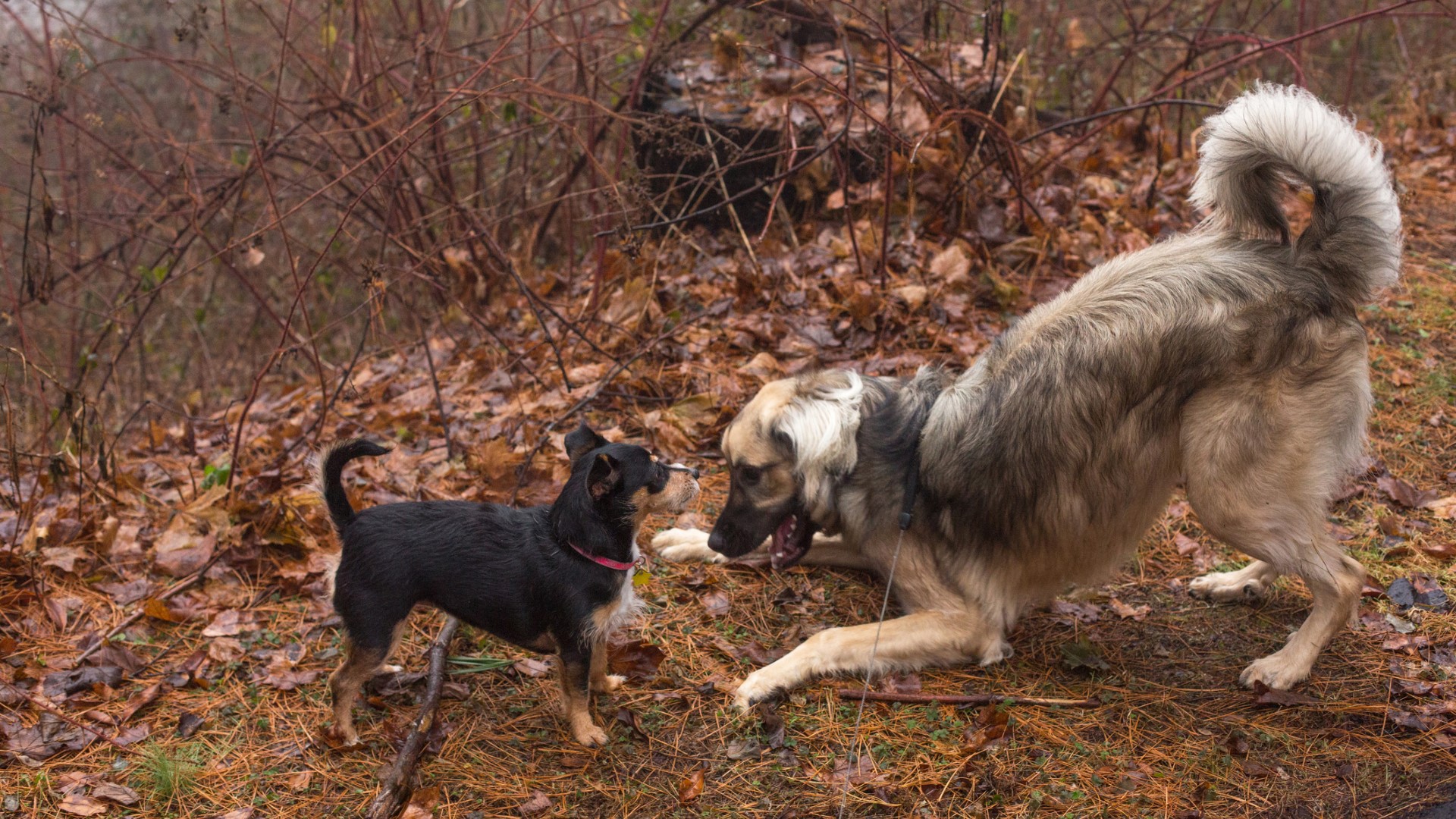
Large-breed dogs can be quite rambunctious with their play styles, which can be great when they’re rough-housing with other big pooches. However, large dogs playfully body-slamming smaller pups can accidentally cause injury or lead to conflict. It’s important to help your large dog learn to regulate their play style and to take it down a notch when you ask them. This can be done through two techniques.
First, you can routinely call your dog away from play time and then give them lots of rewards for doing so before allowing them to head back to playing. Additionally, practice incrementally hyping your dog up and then calming them down to help them learn to regulate their energy levels. One way to do this is to play a game of tug and then immediately ask for them to sit or lie on a mat, and reward them for doing so. You can gradually build up the intensity and distraction levels of this game.







